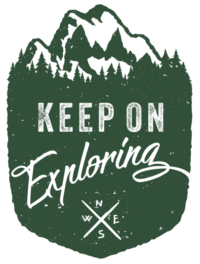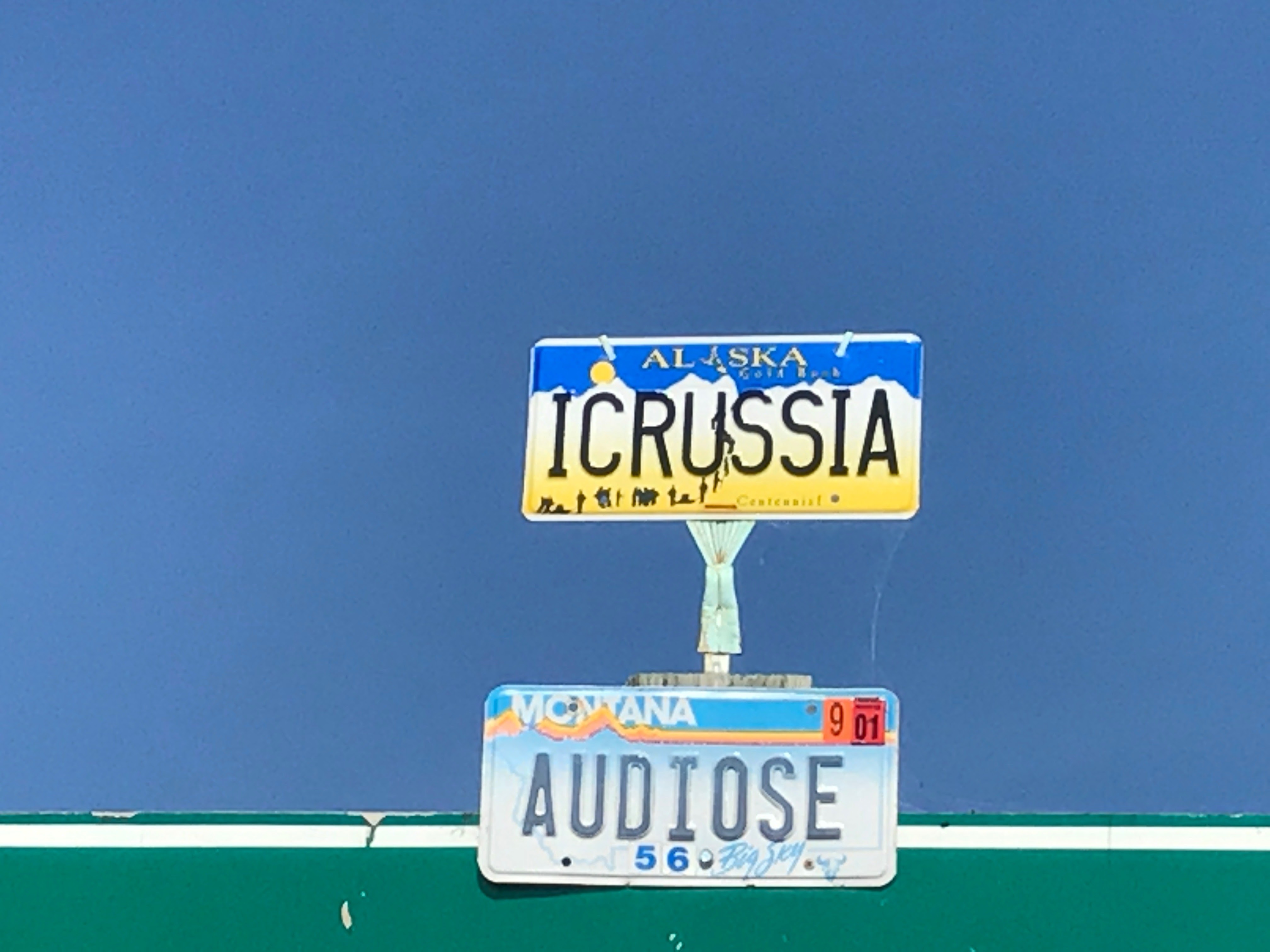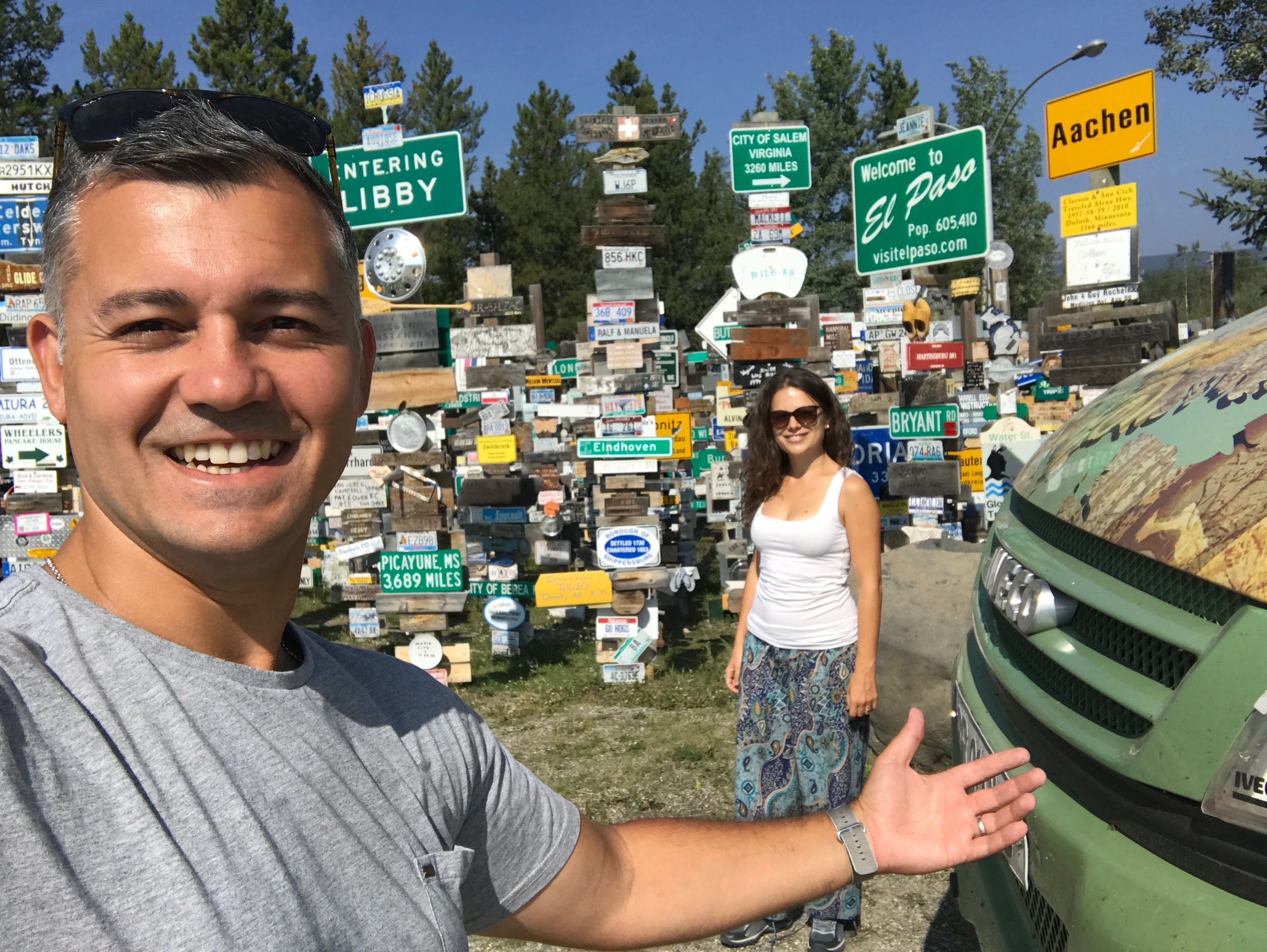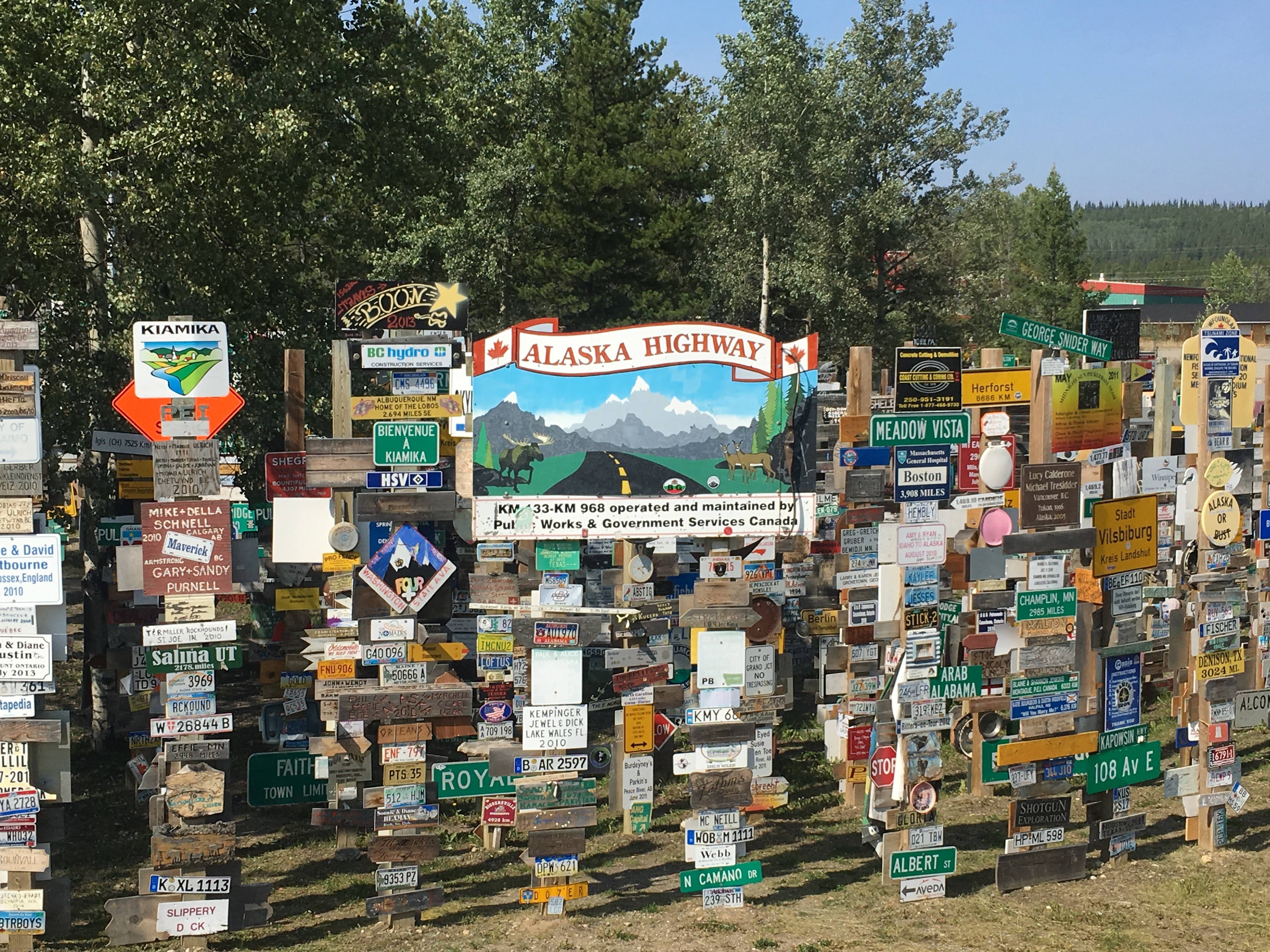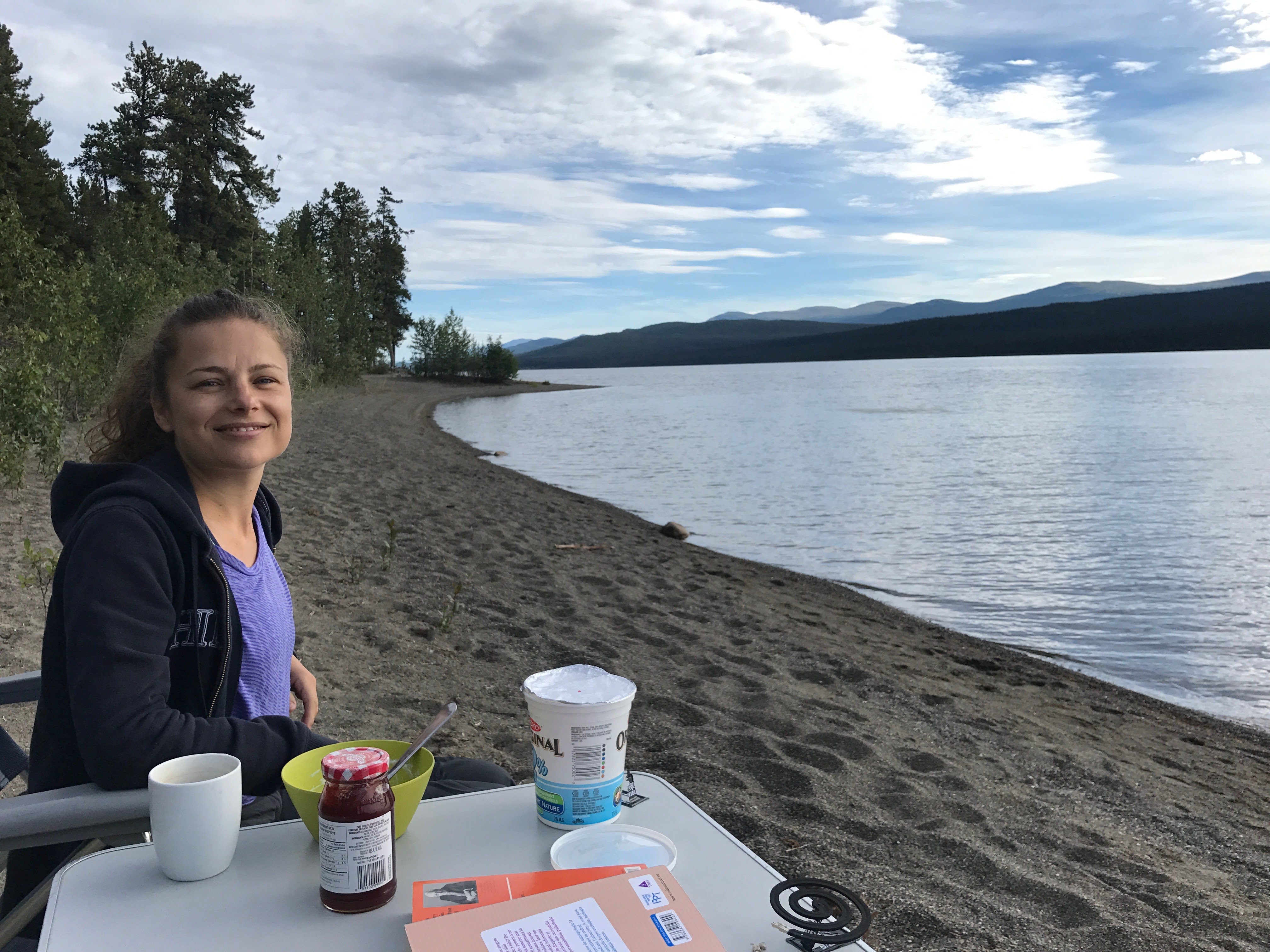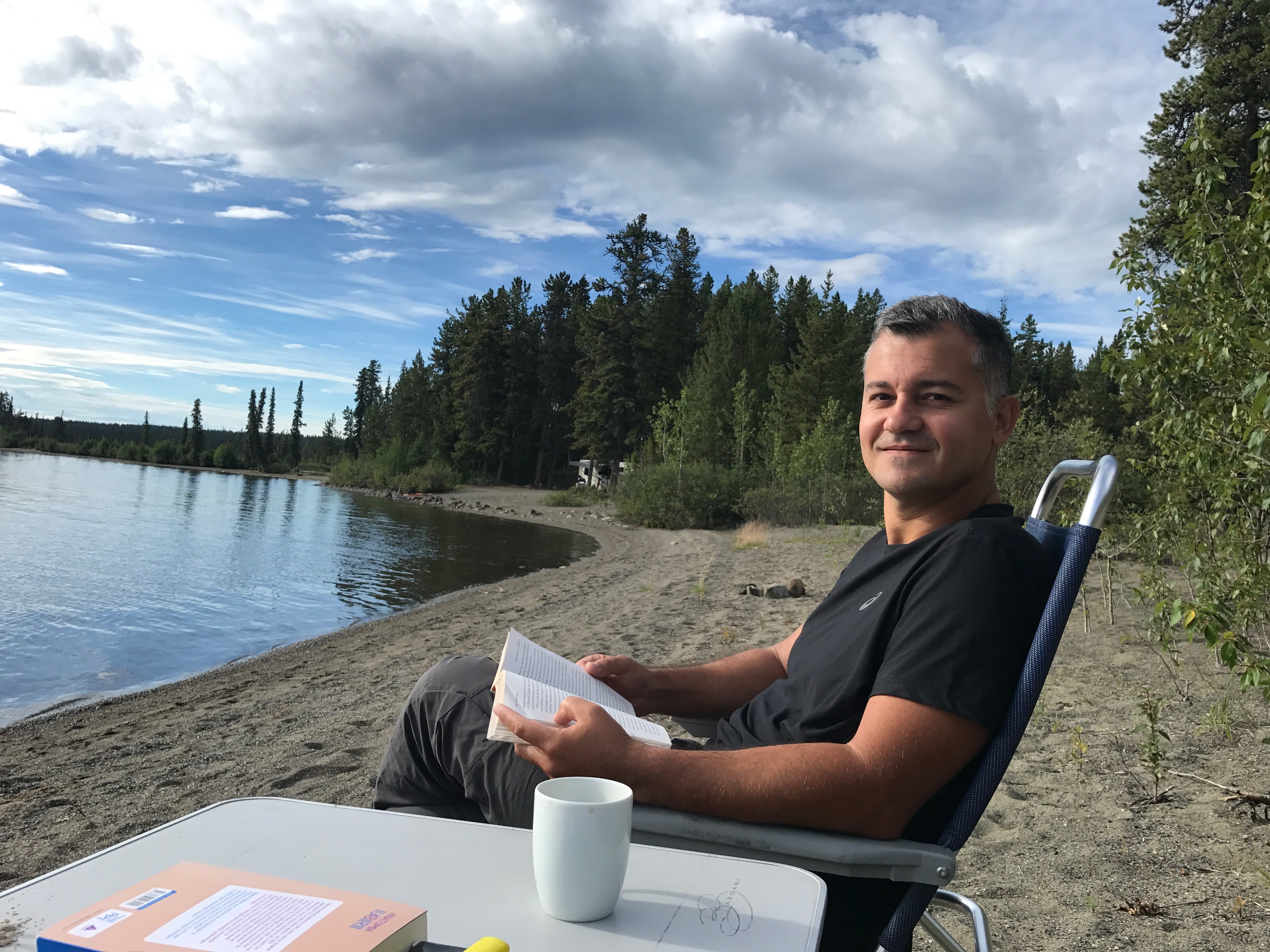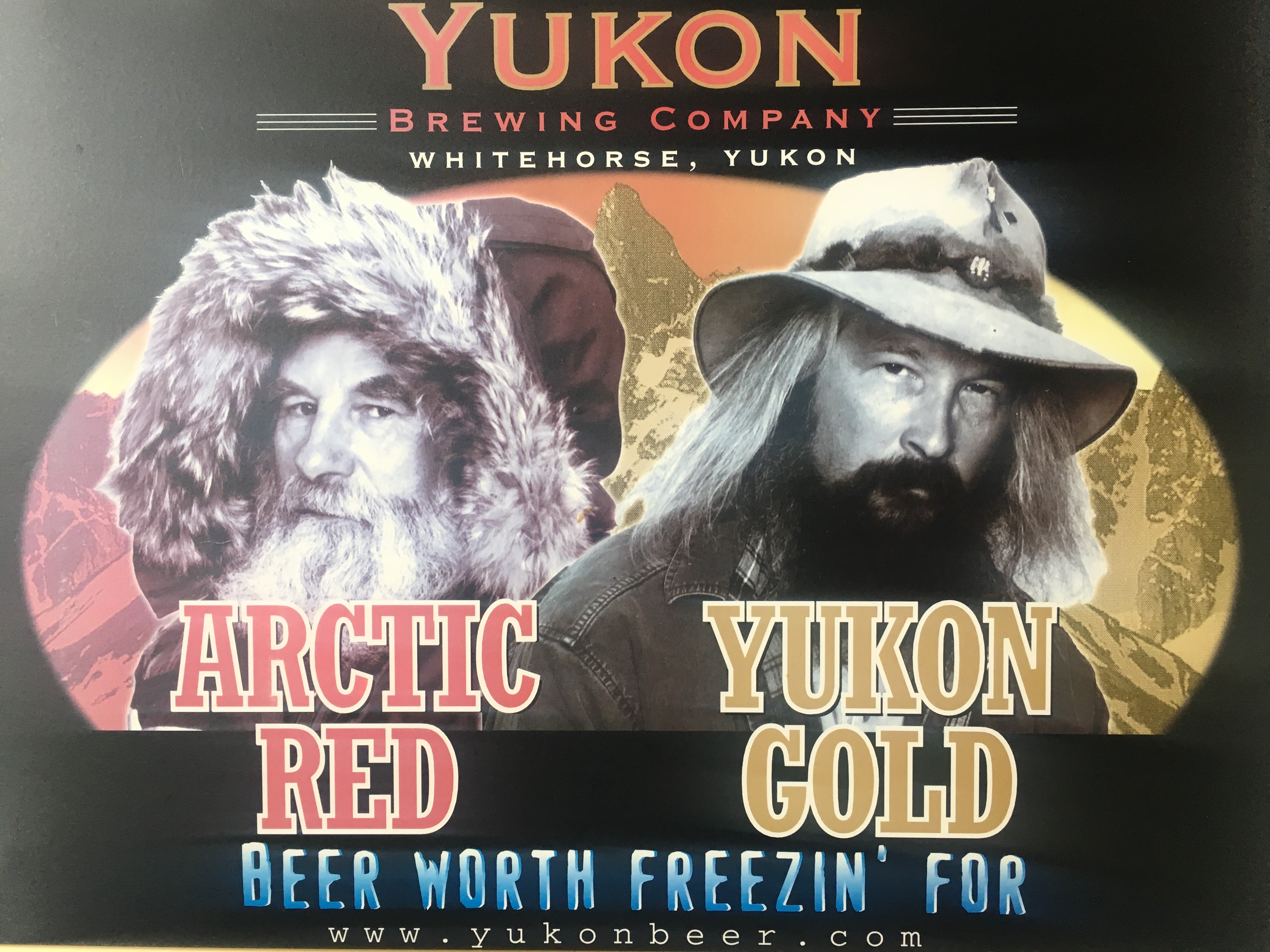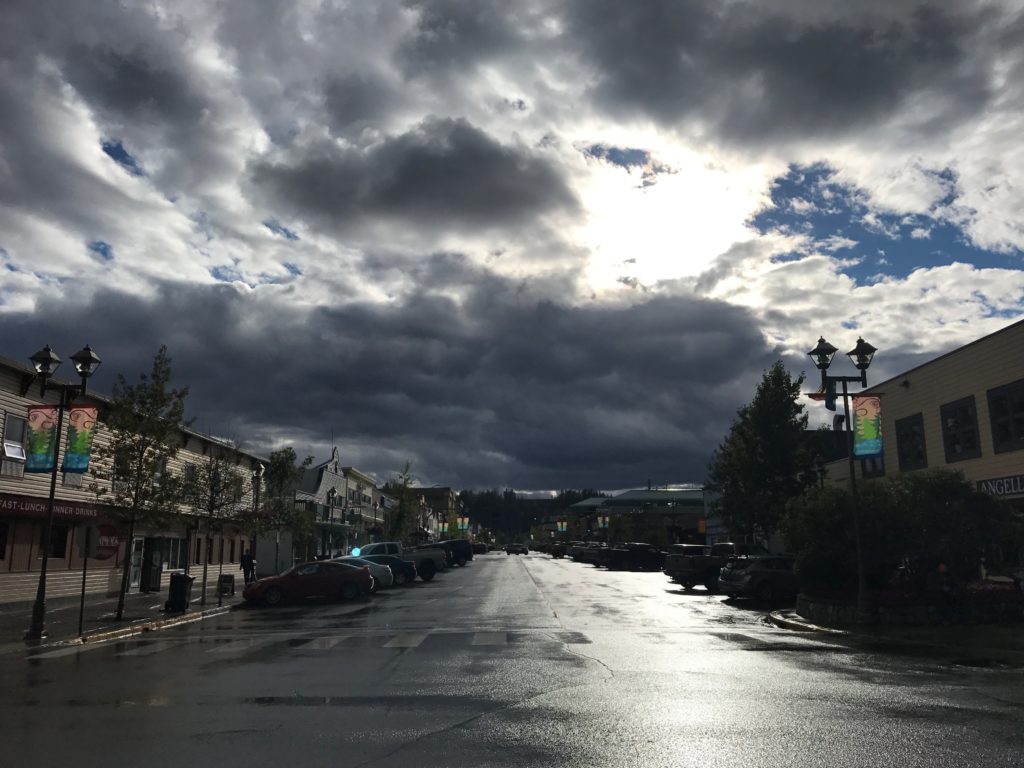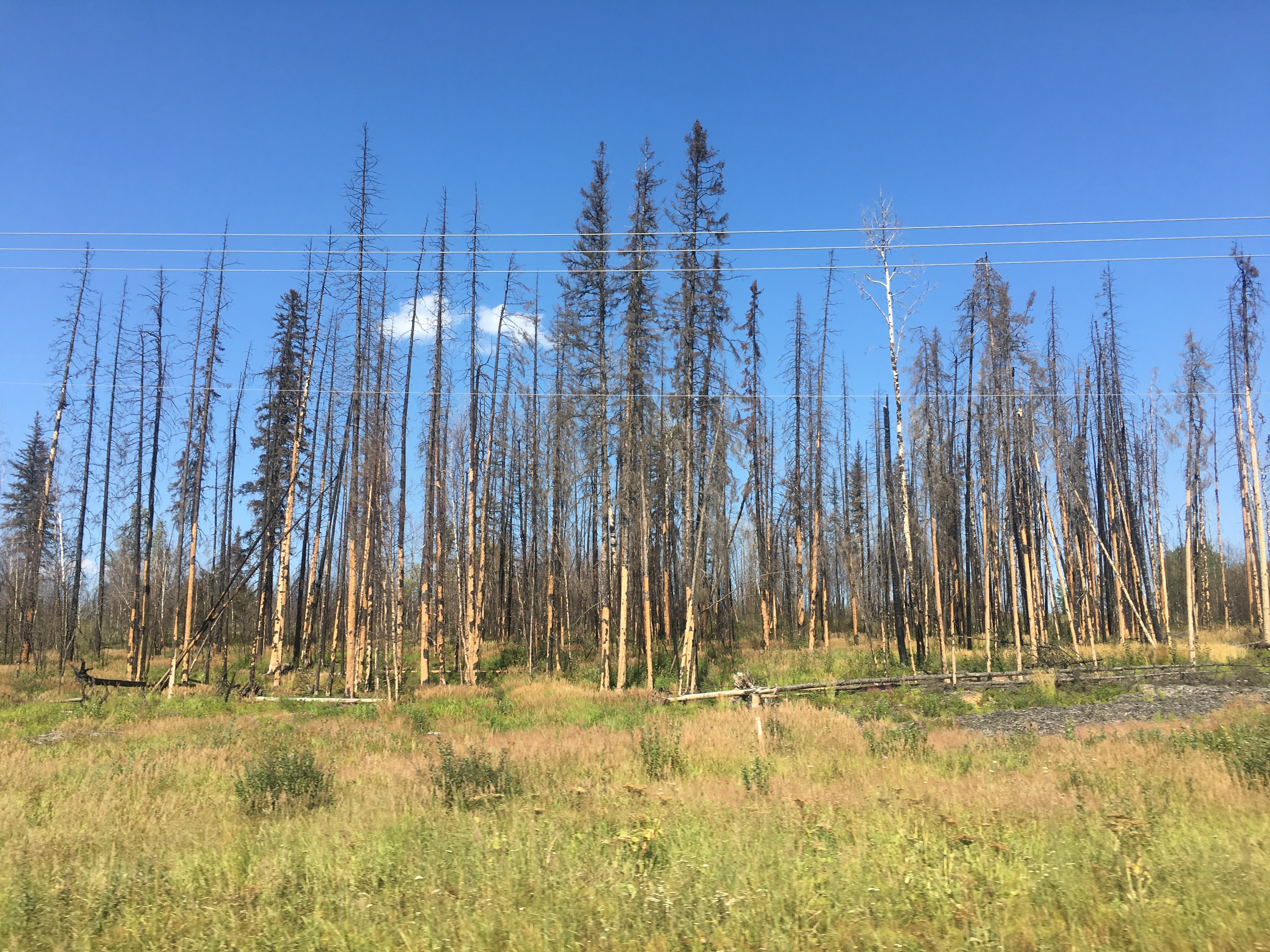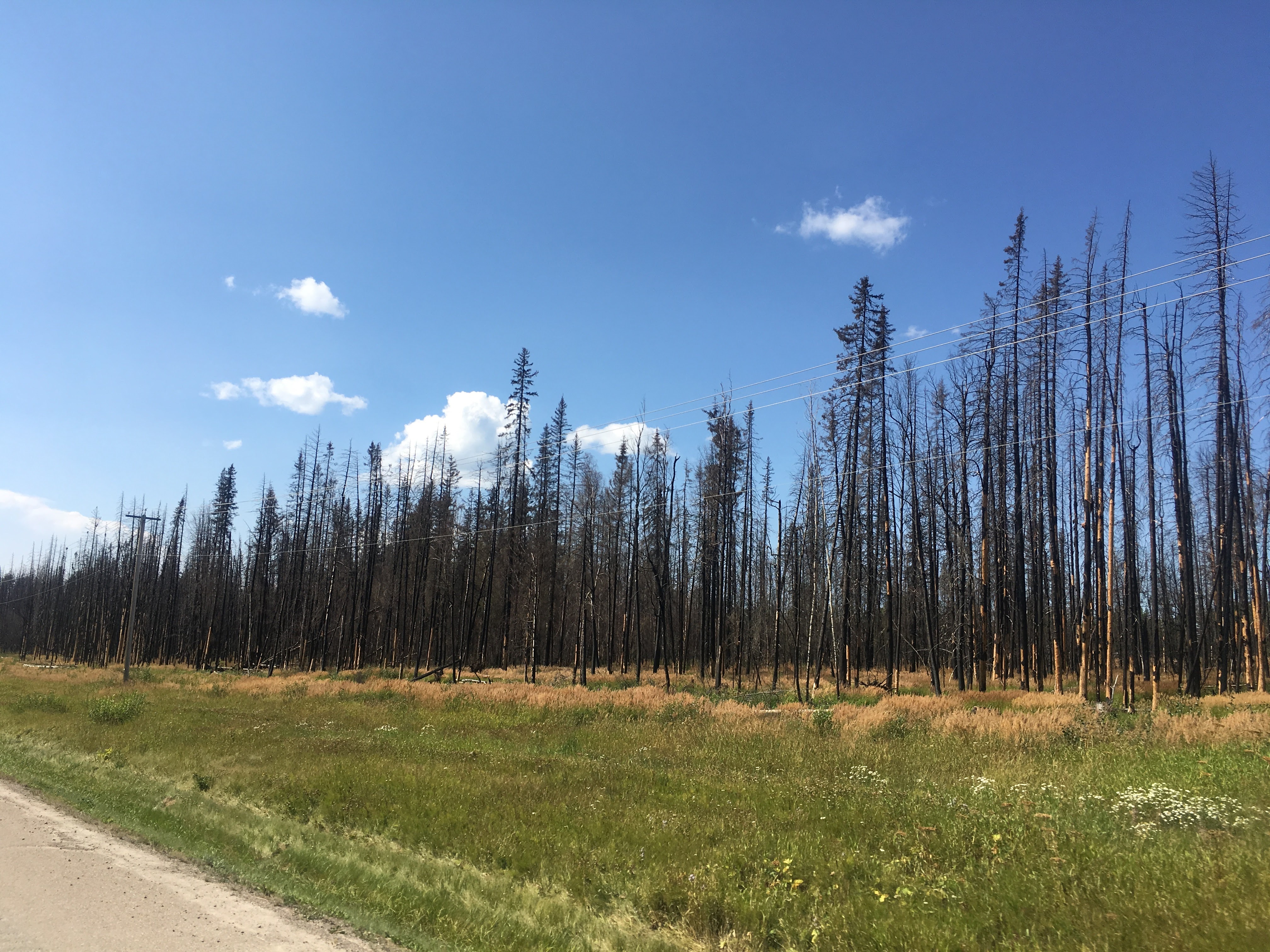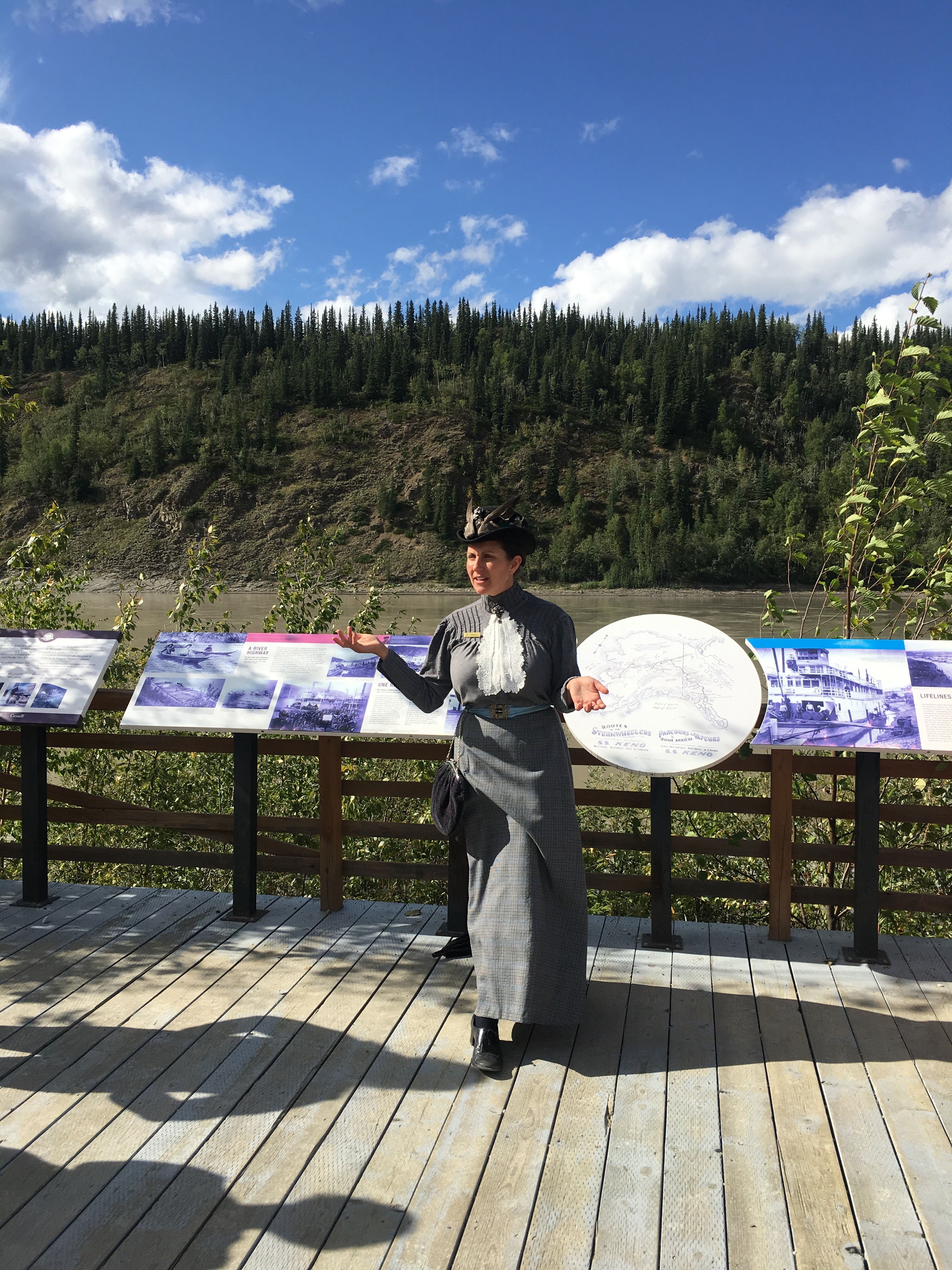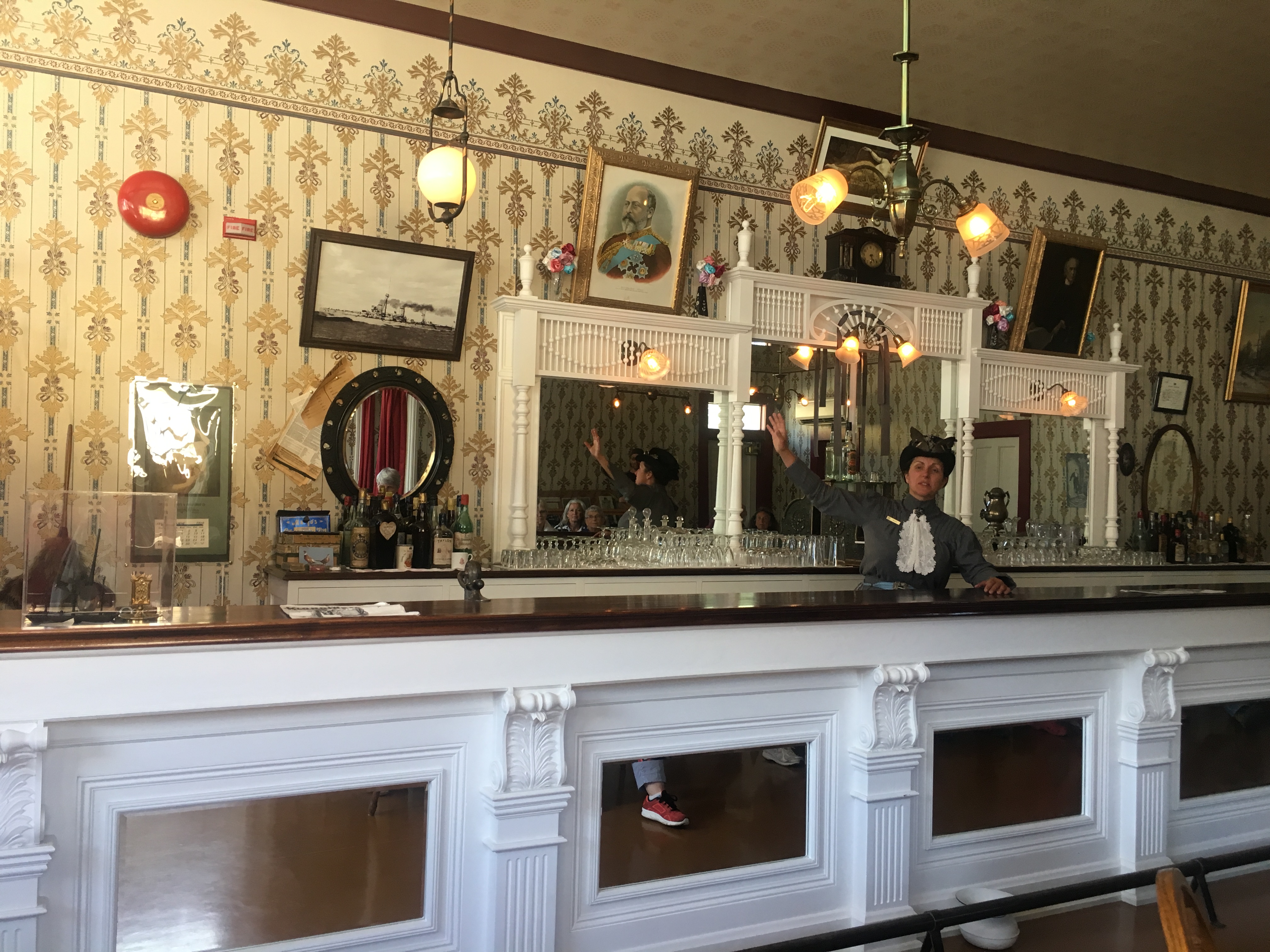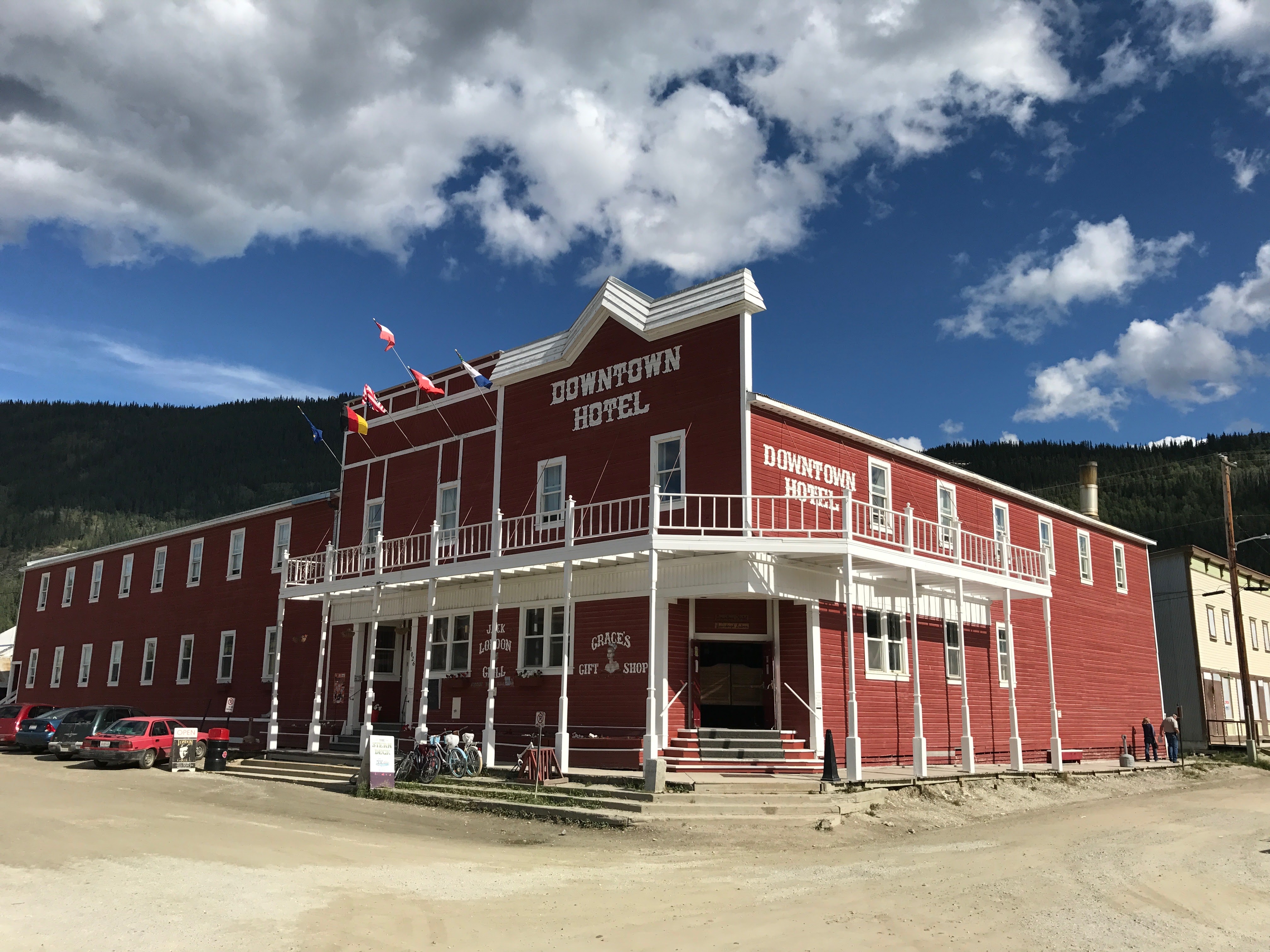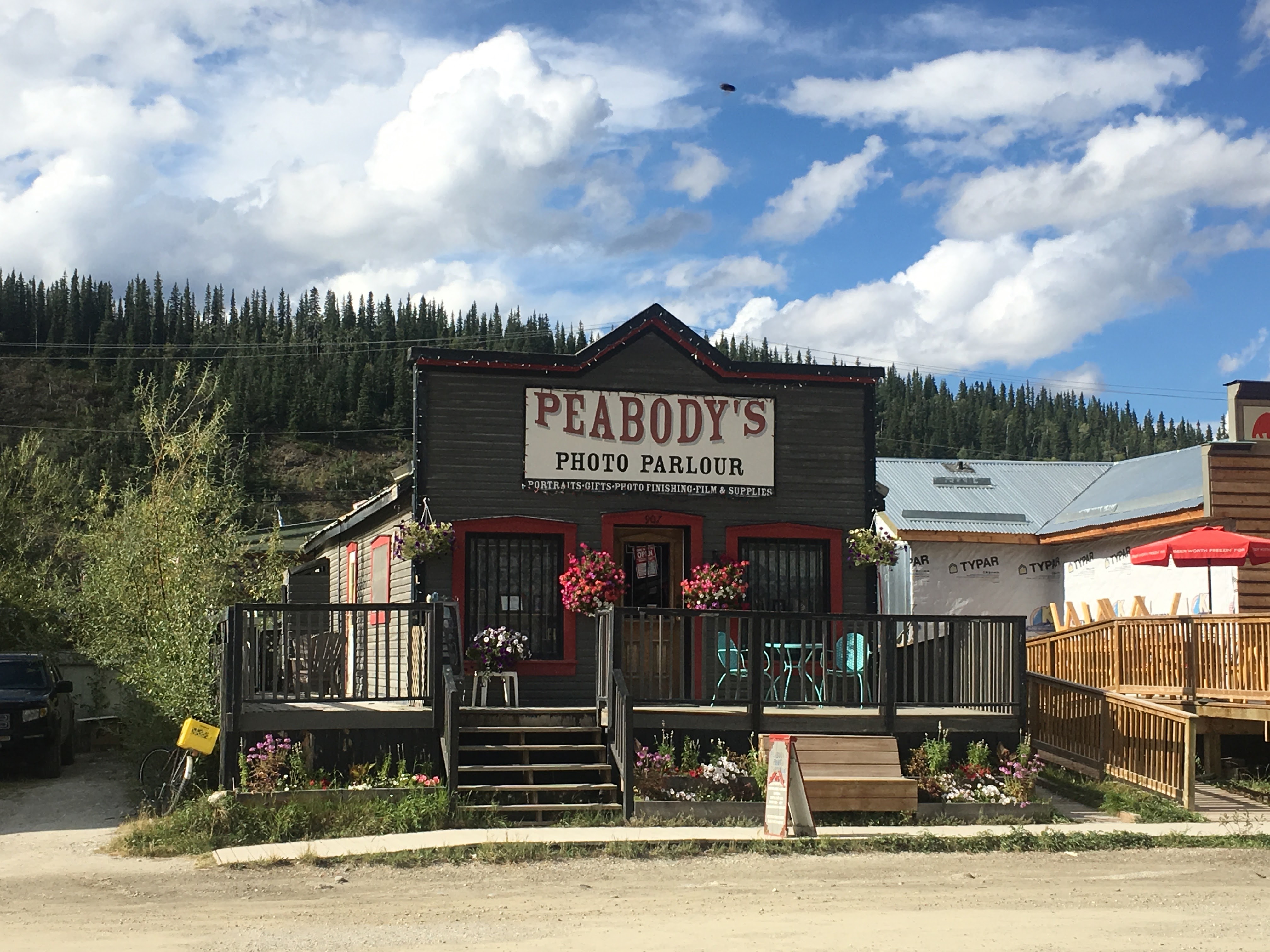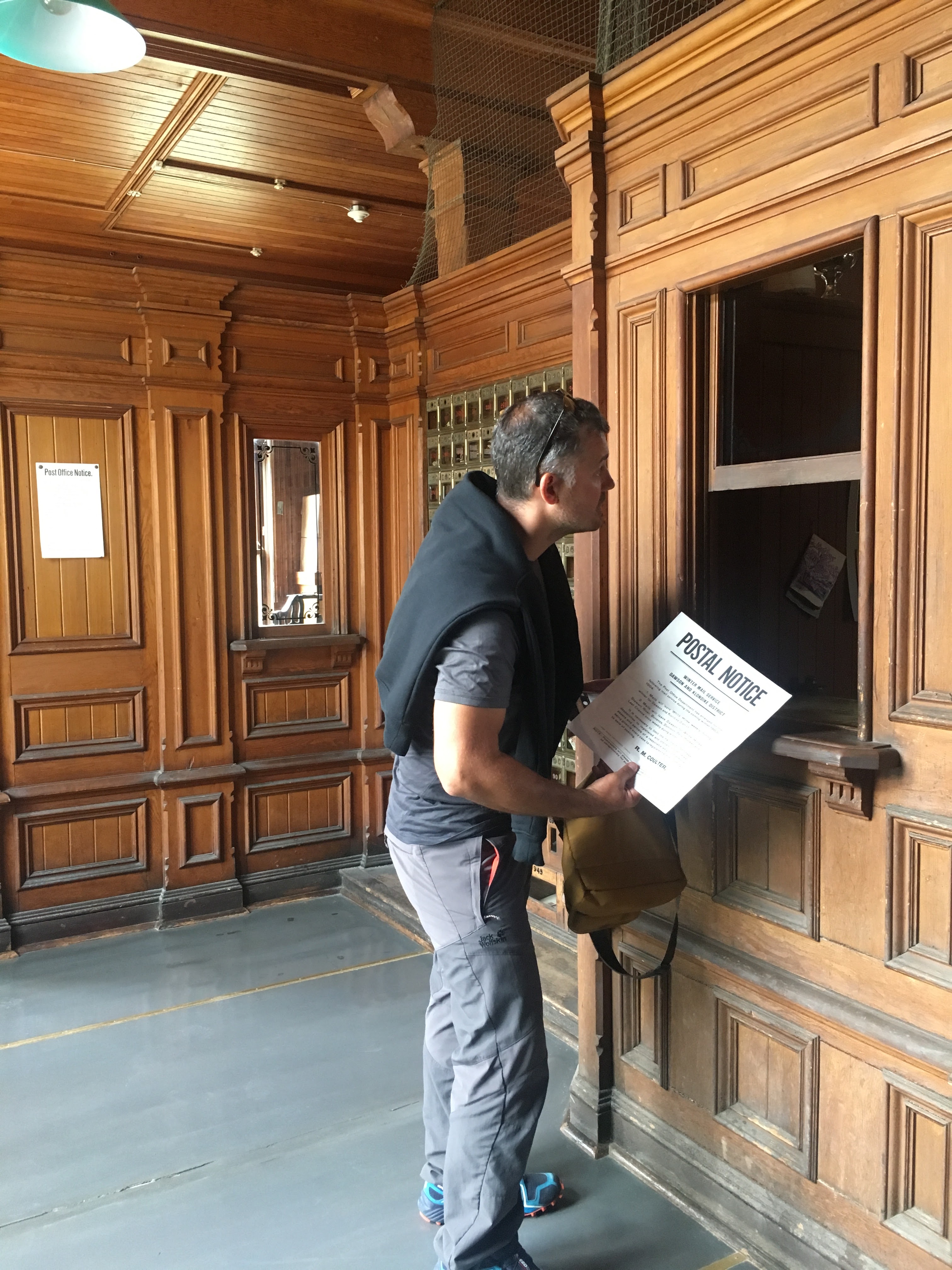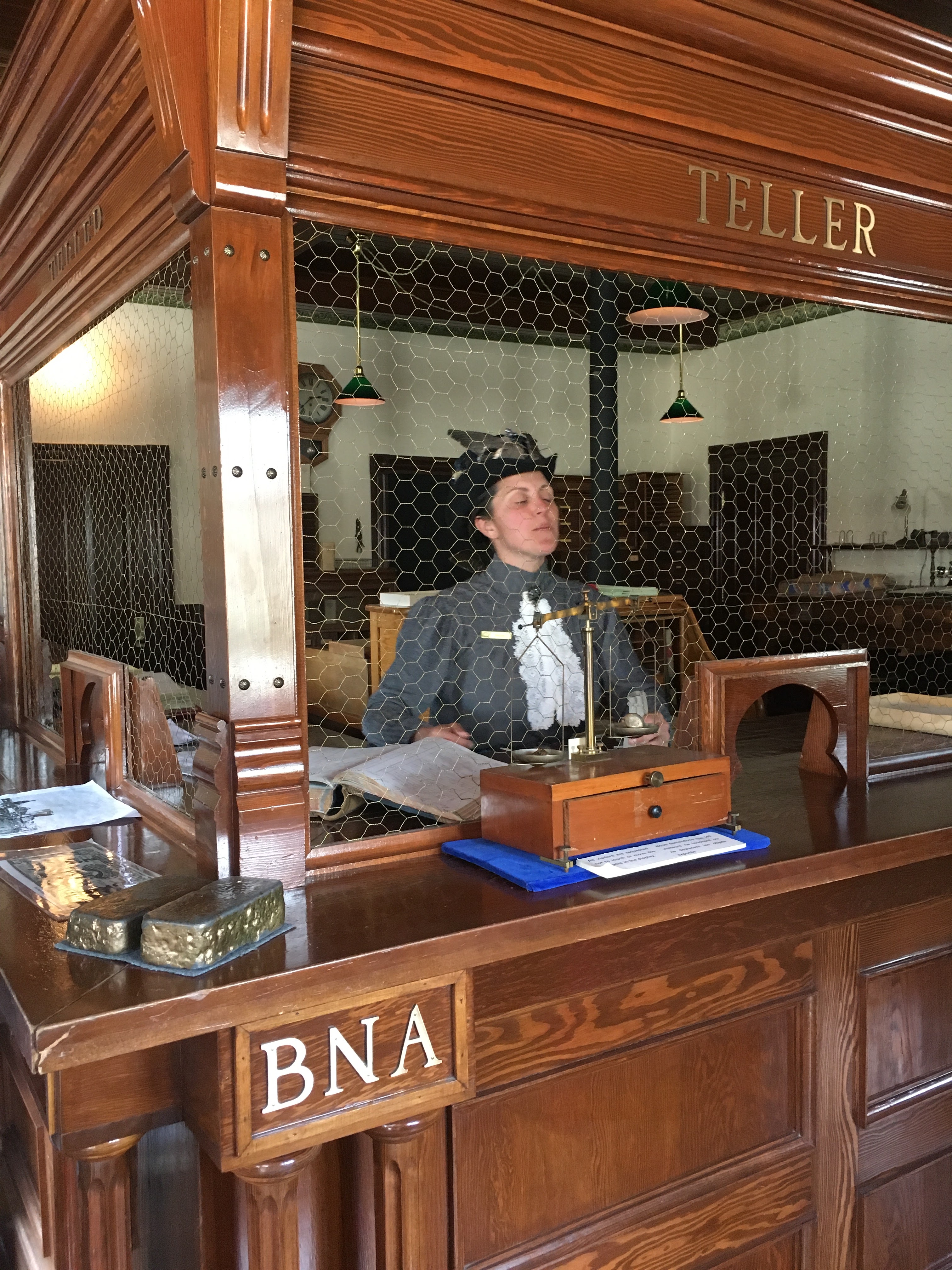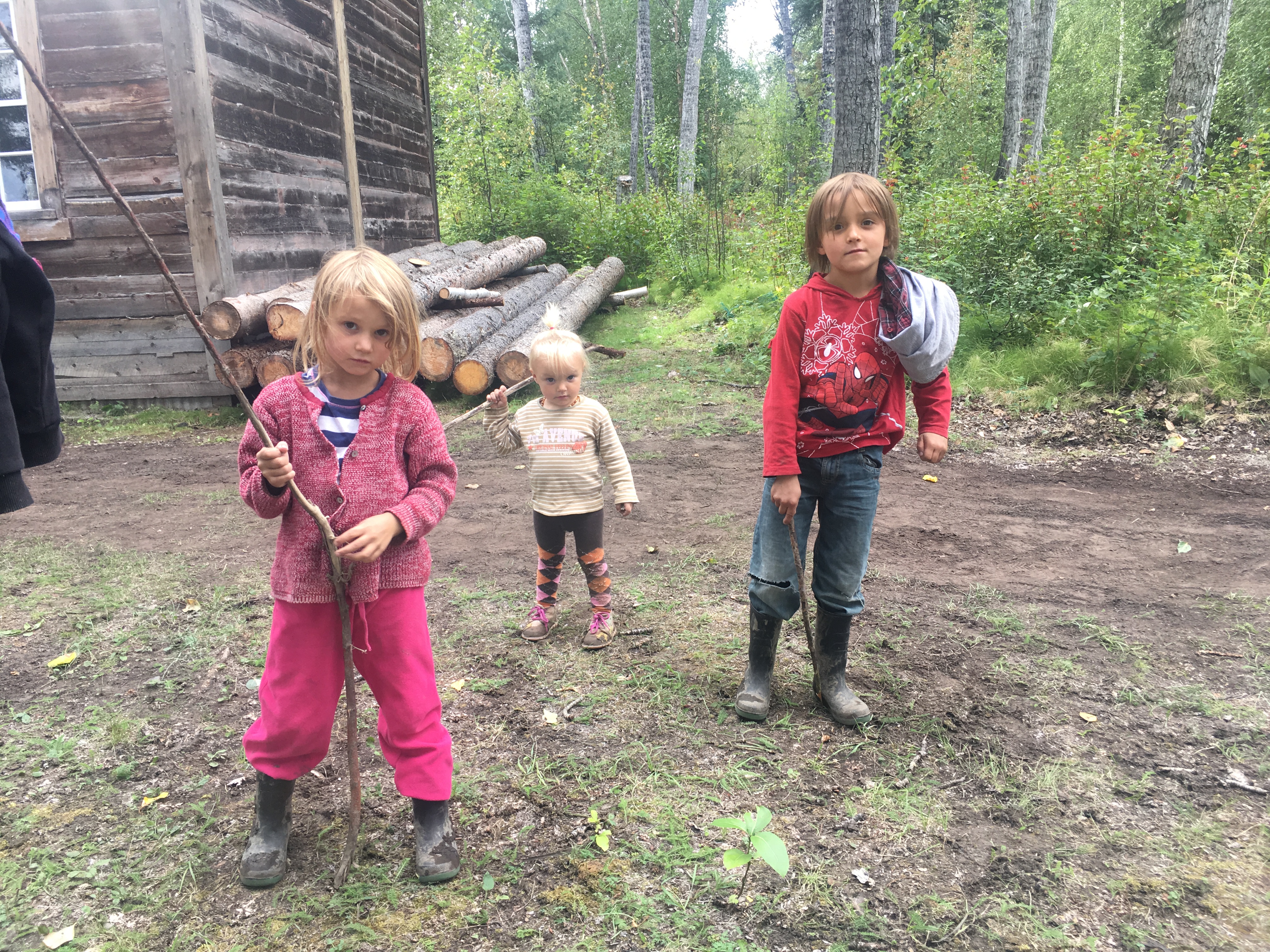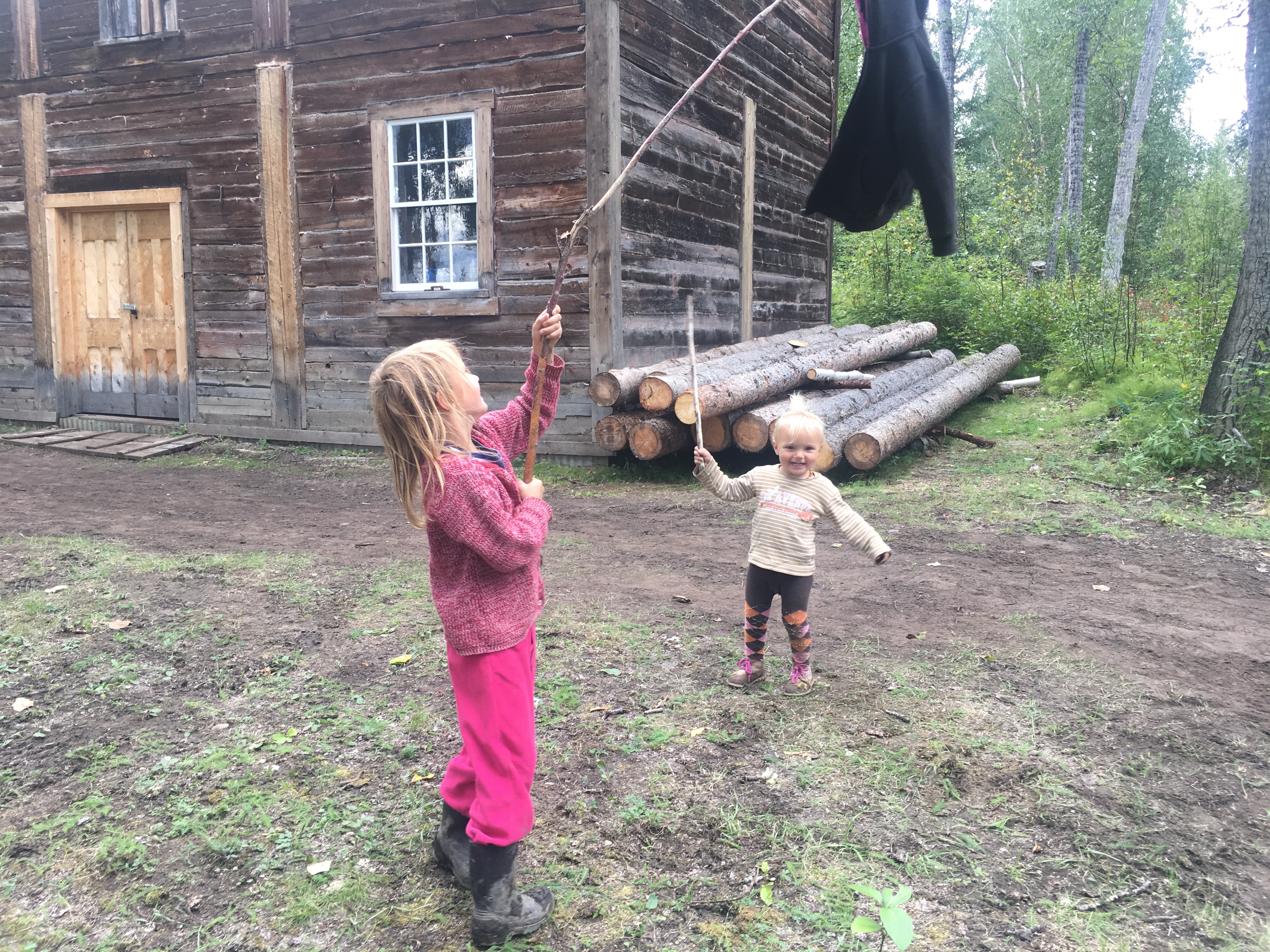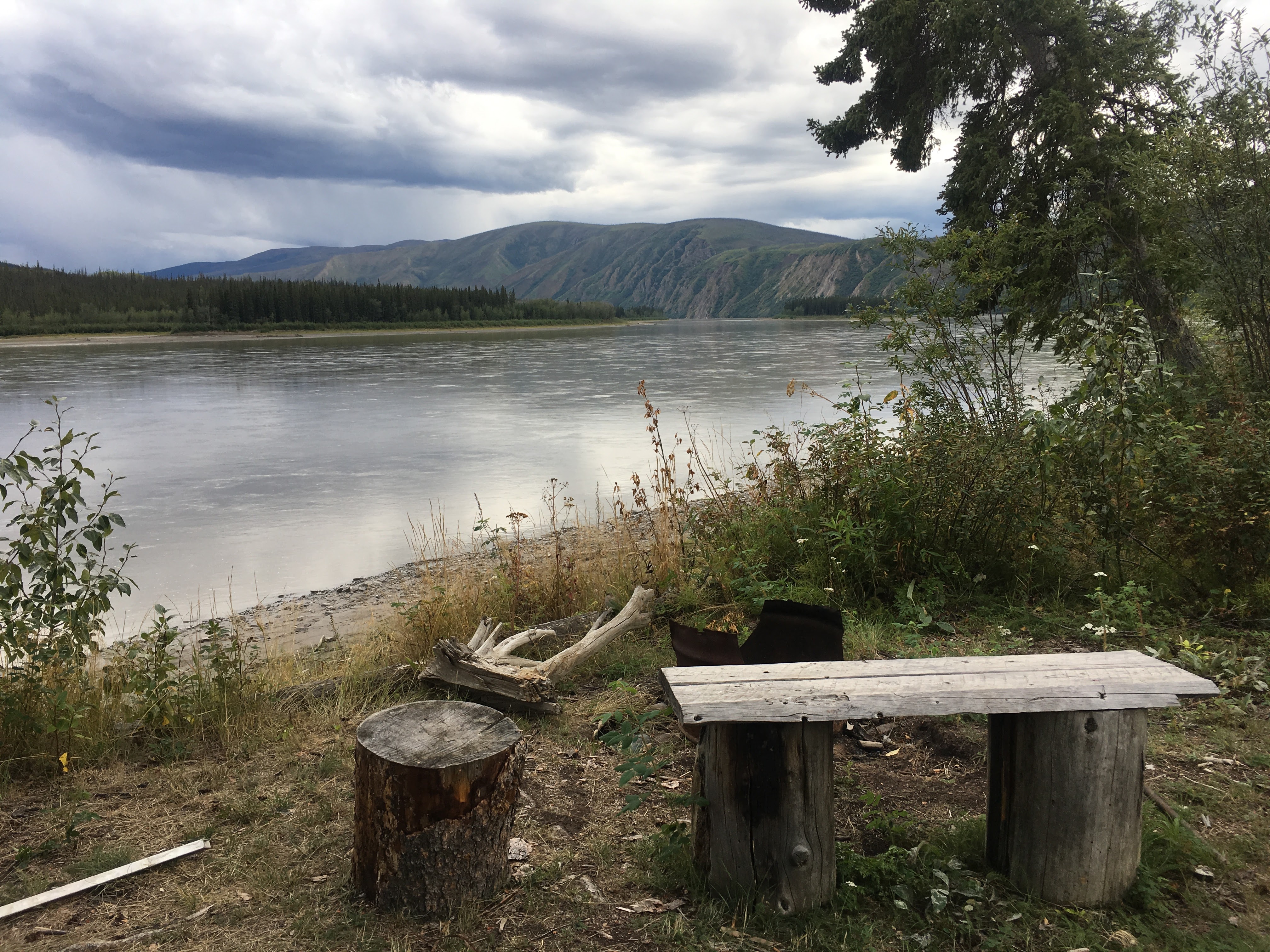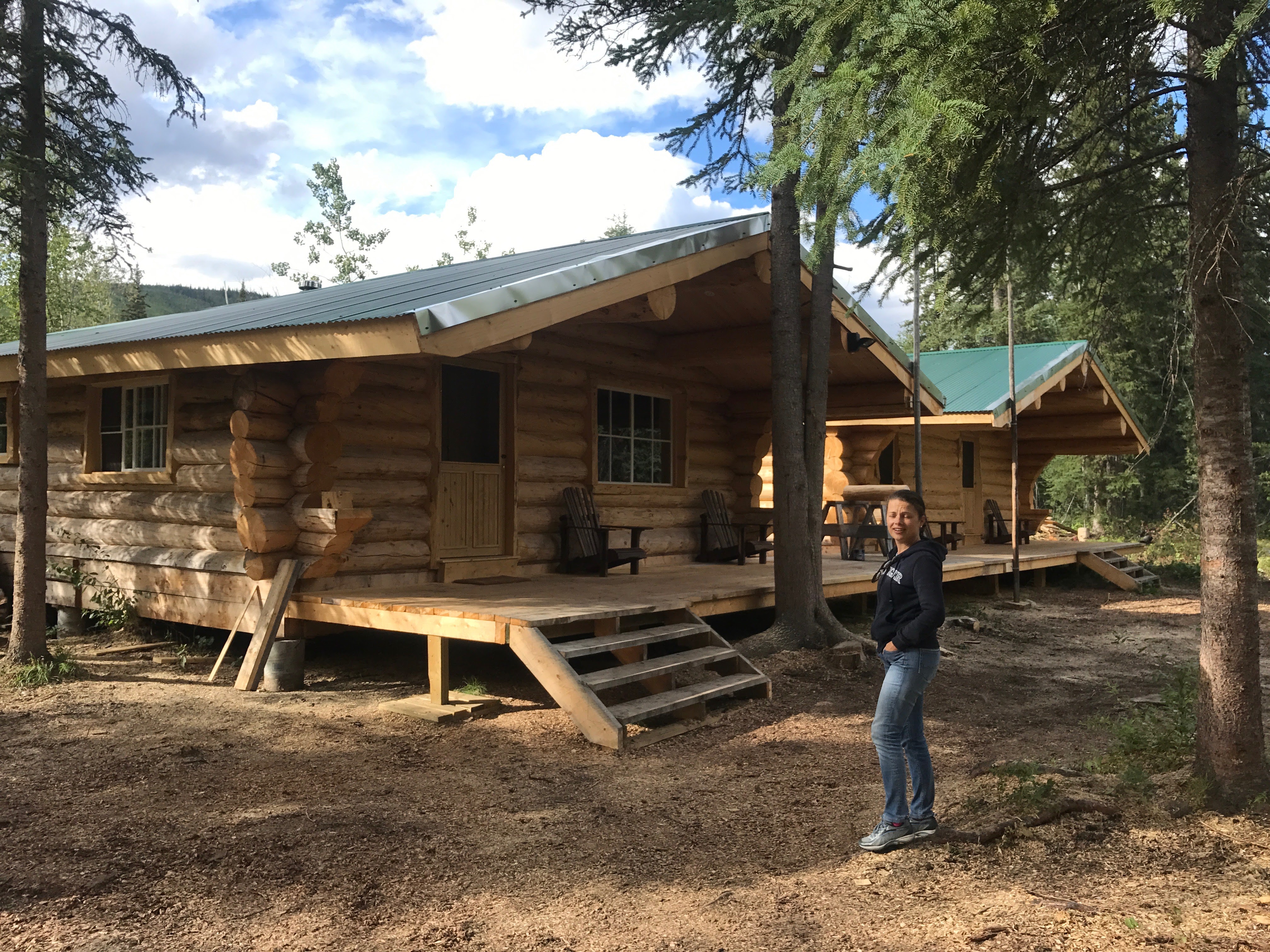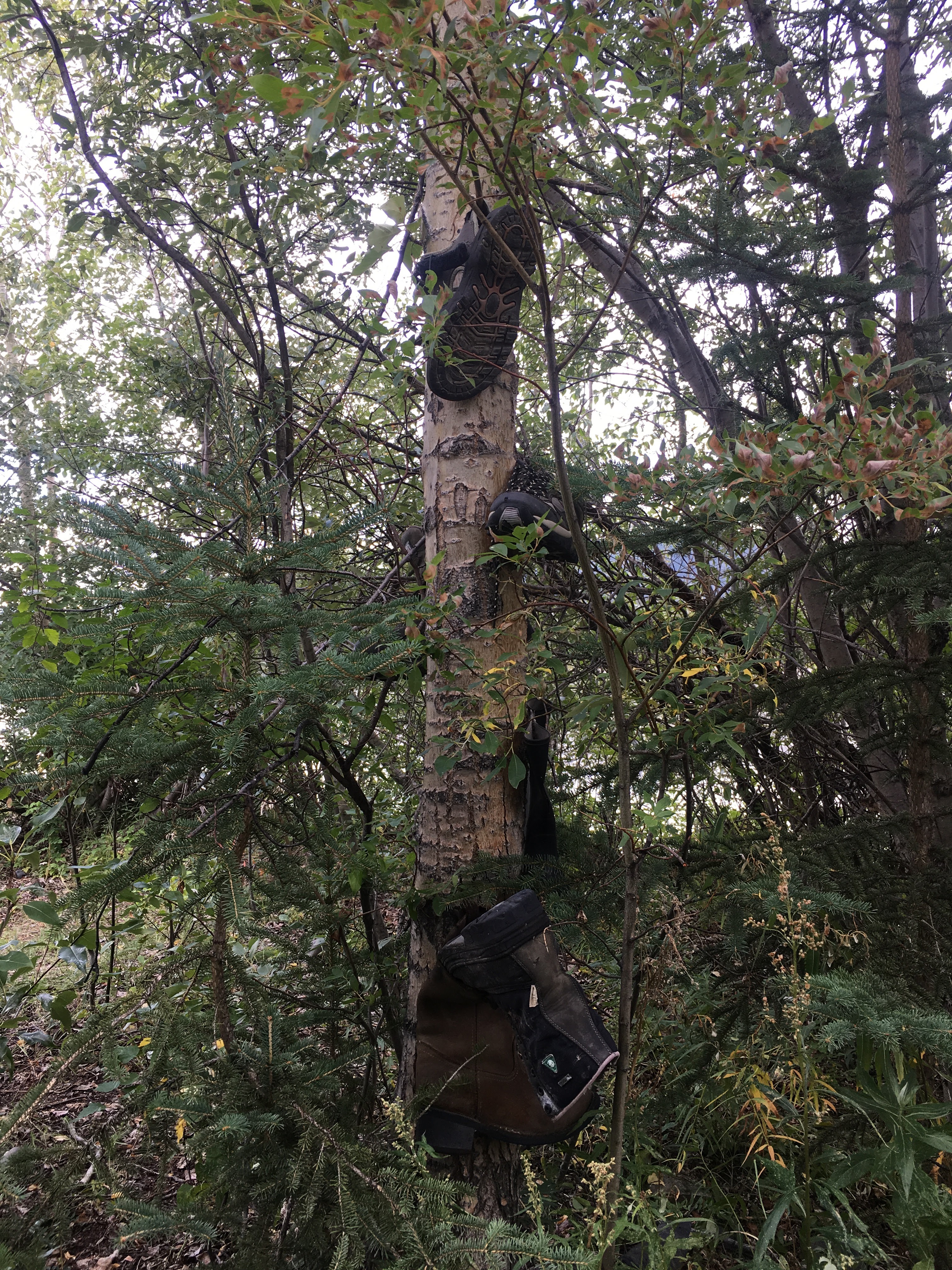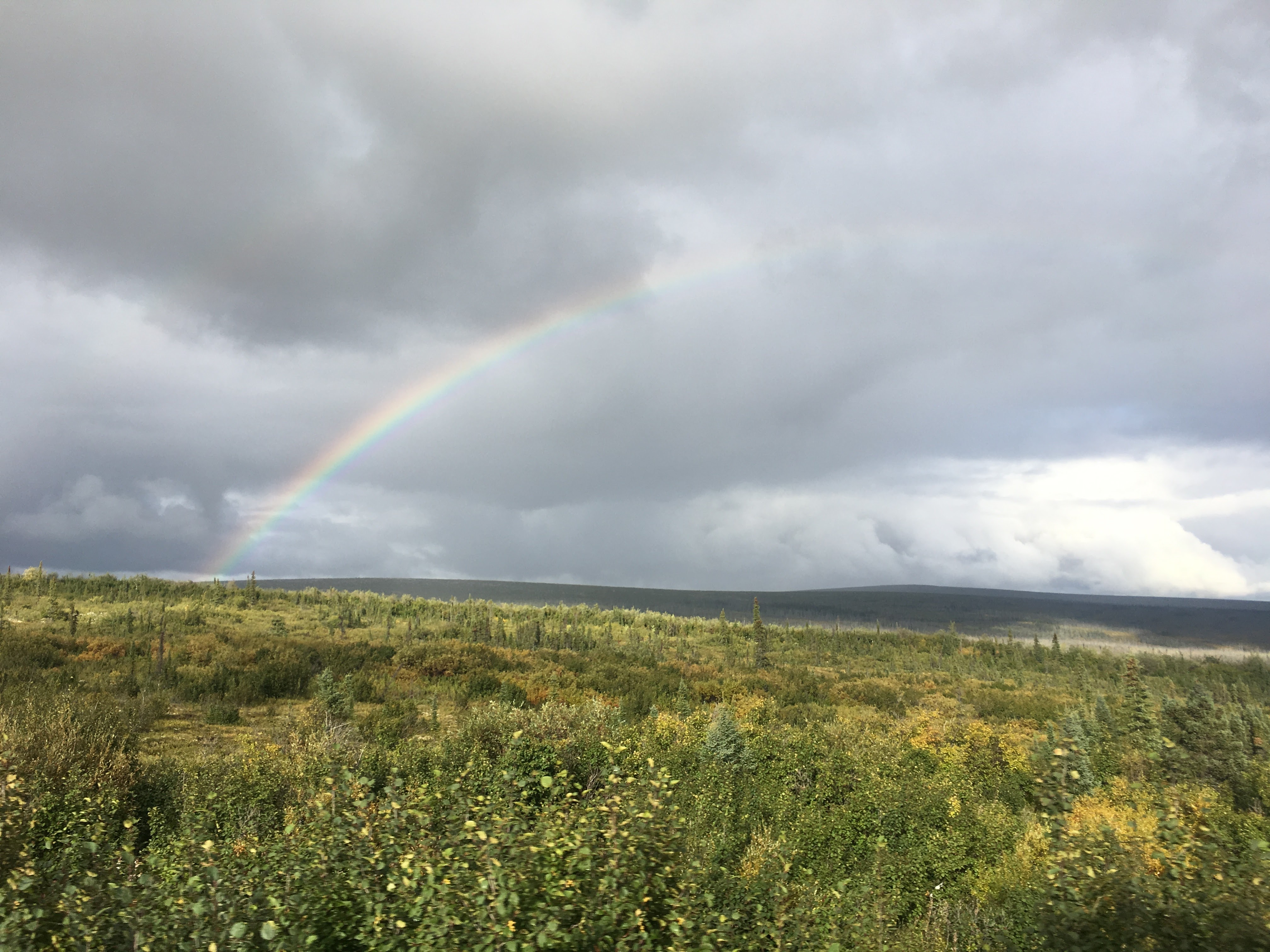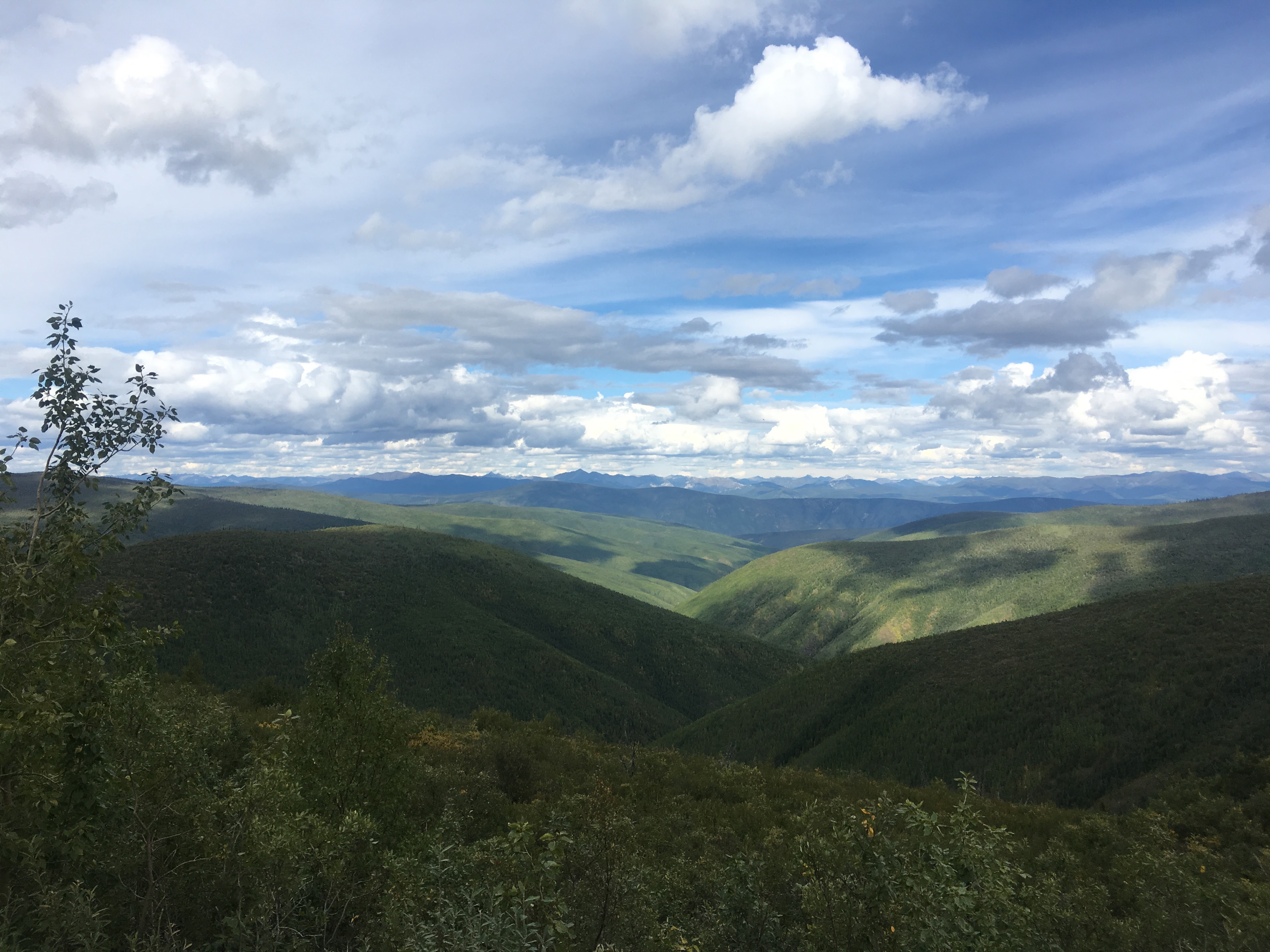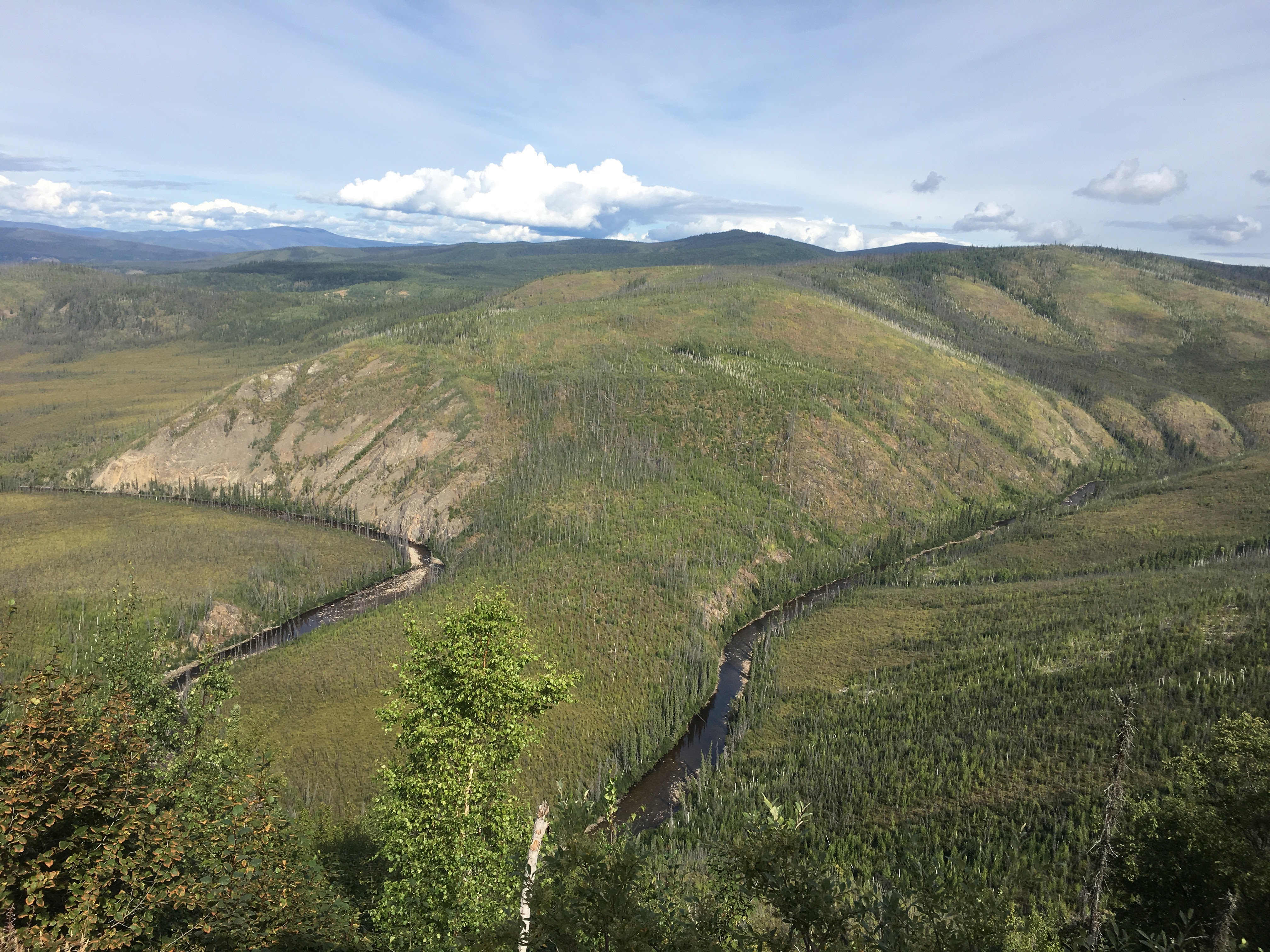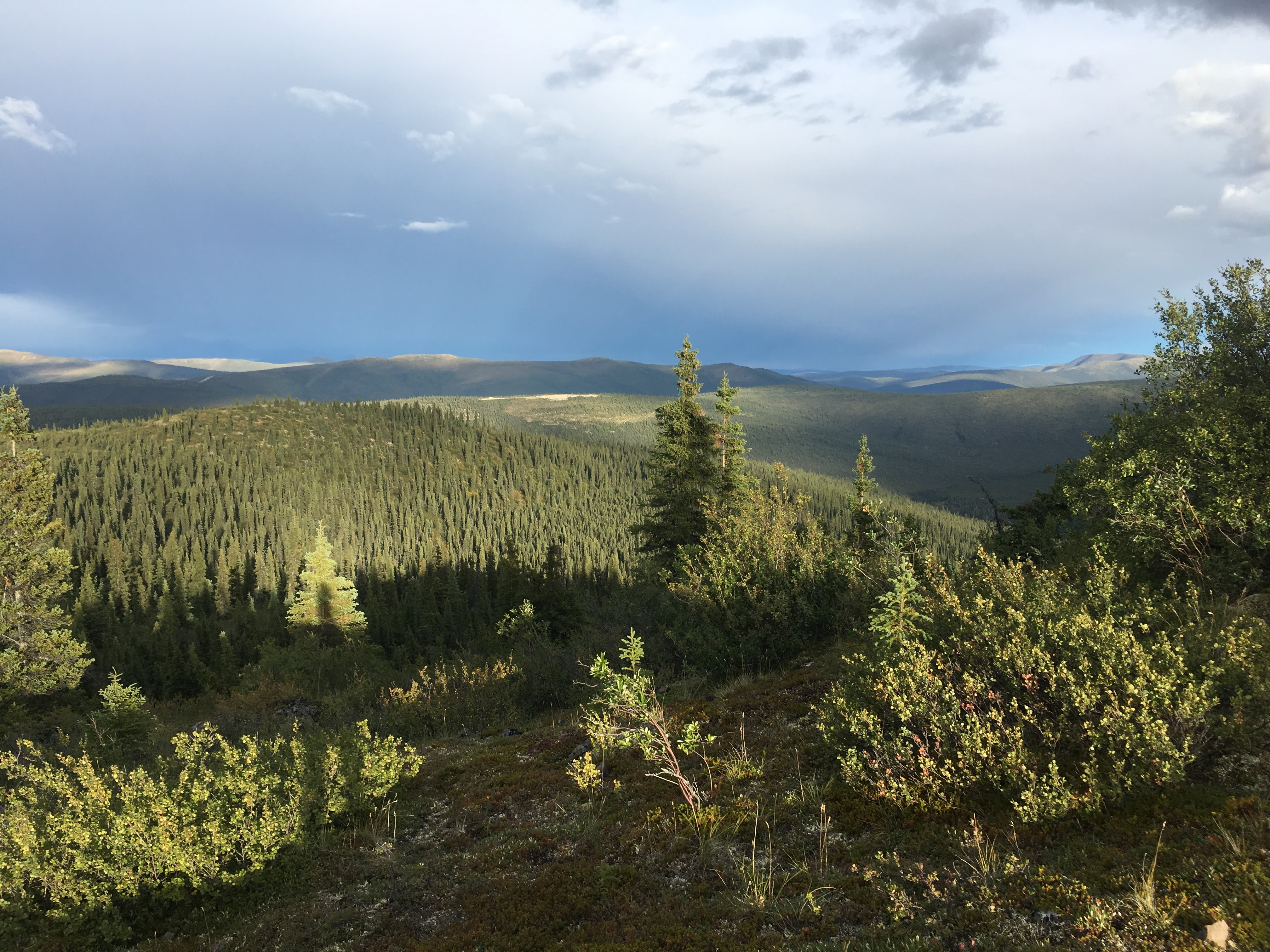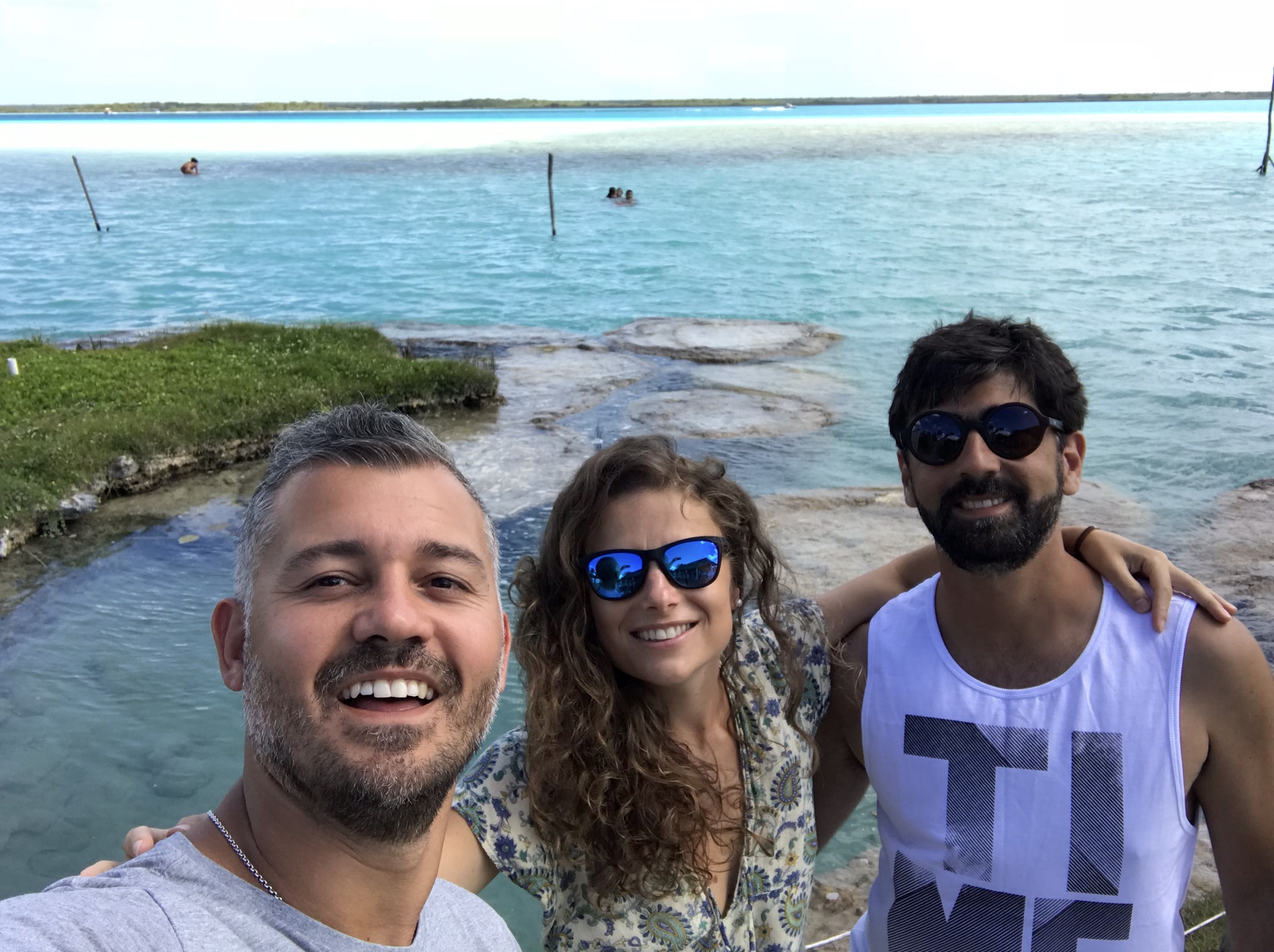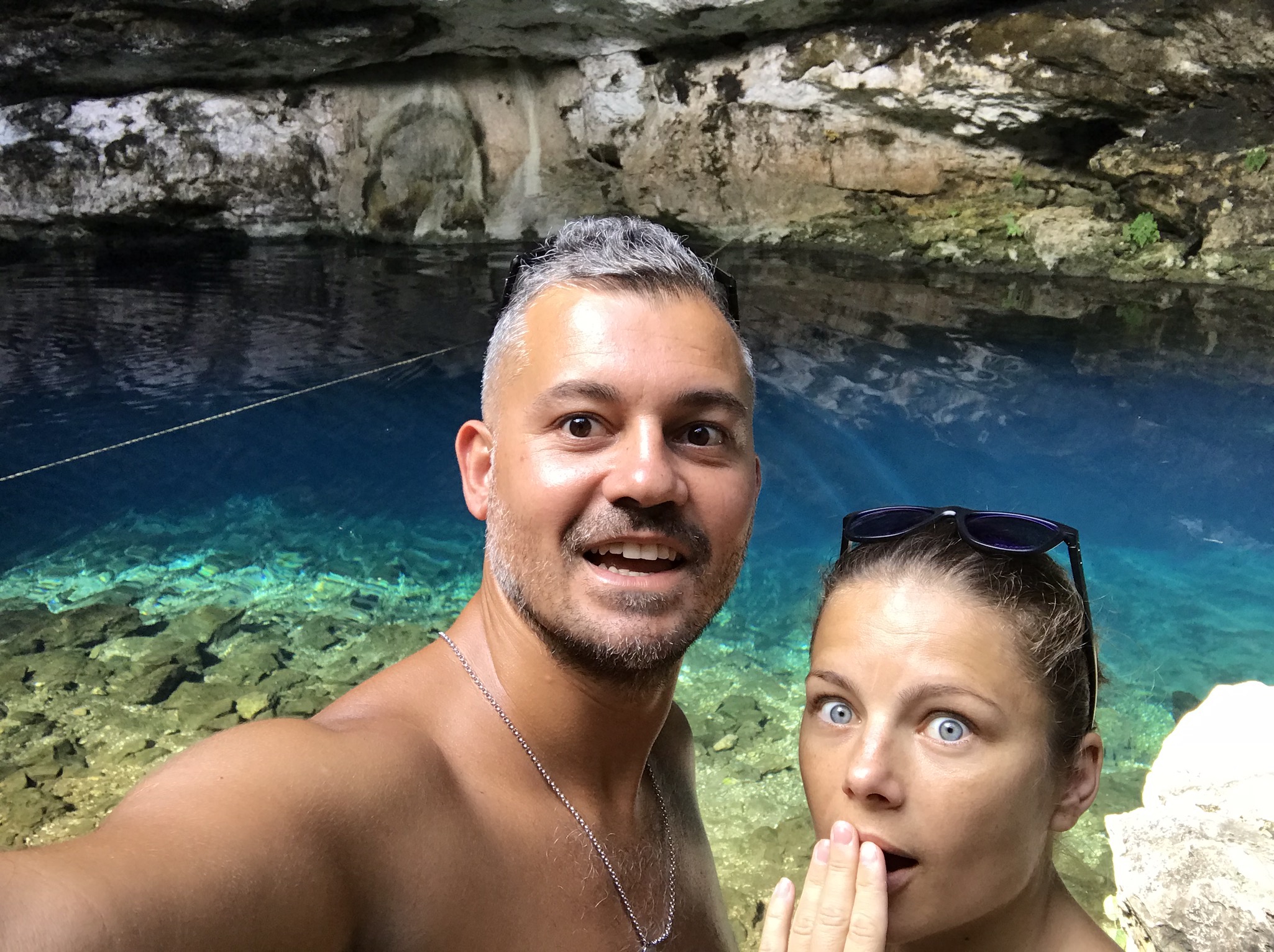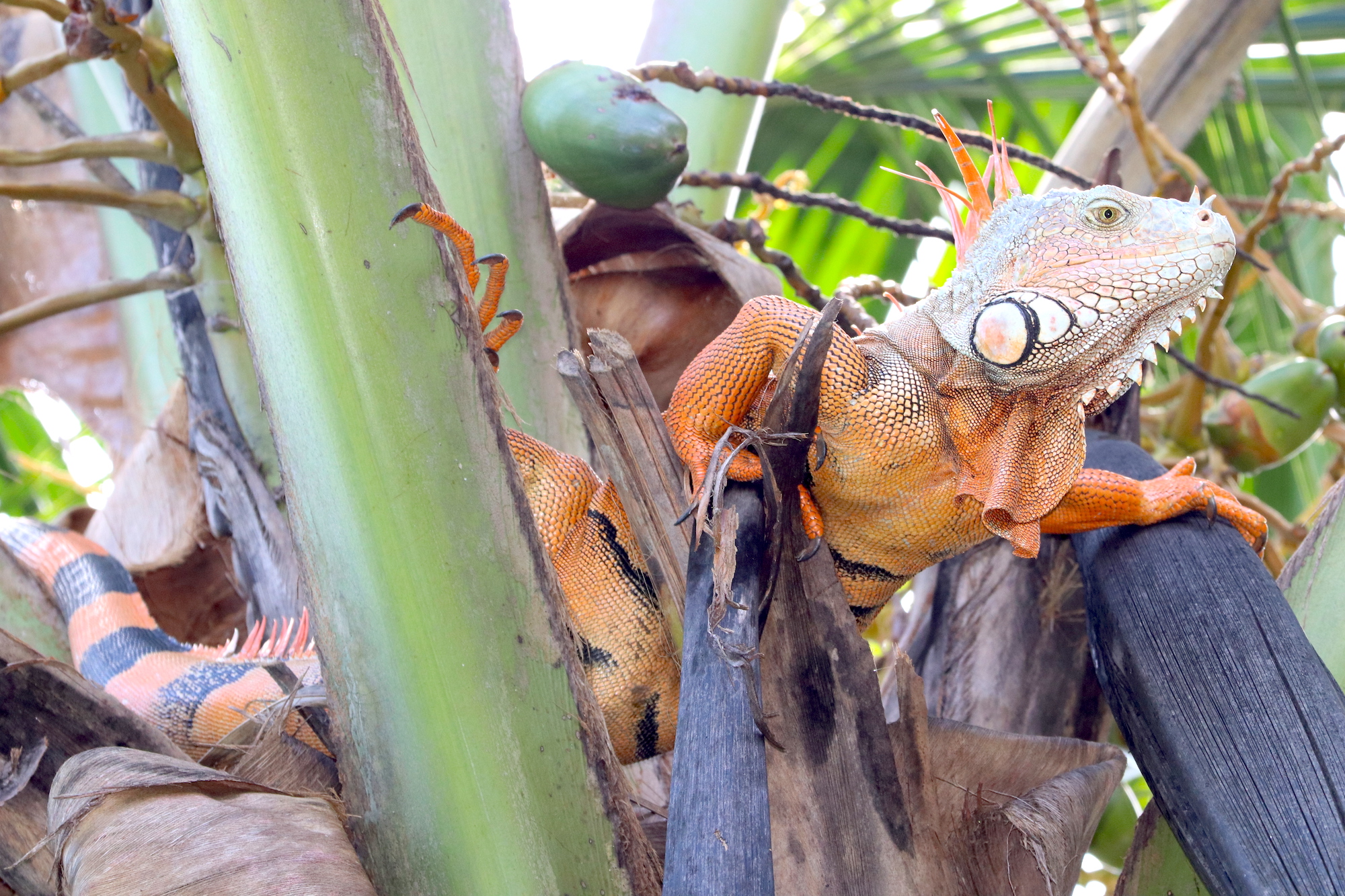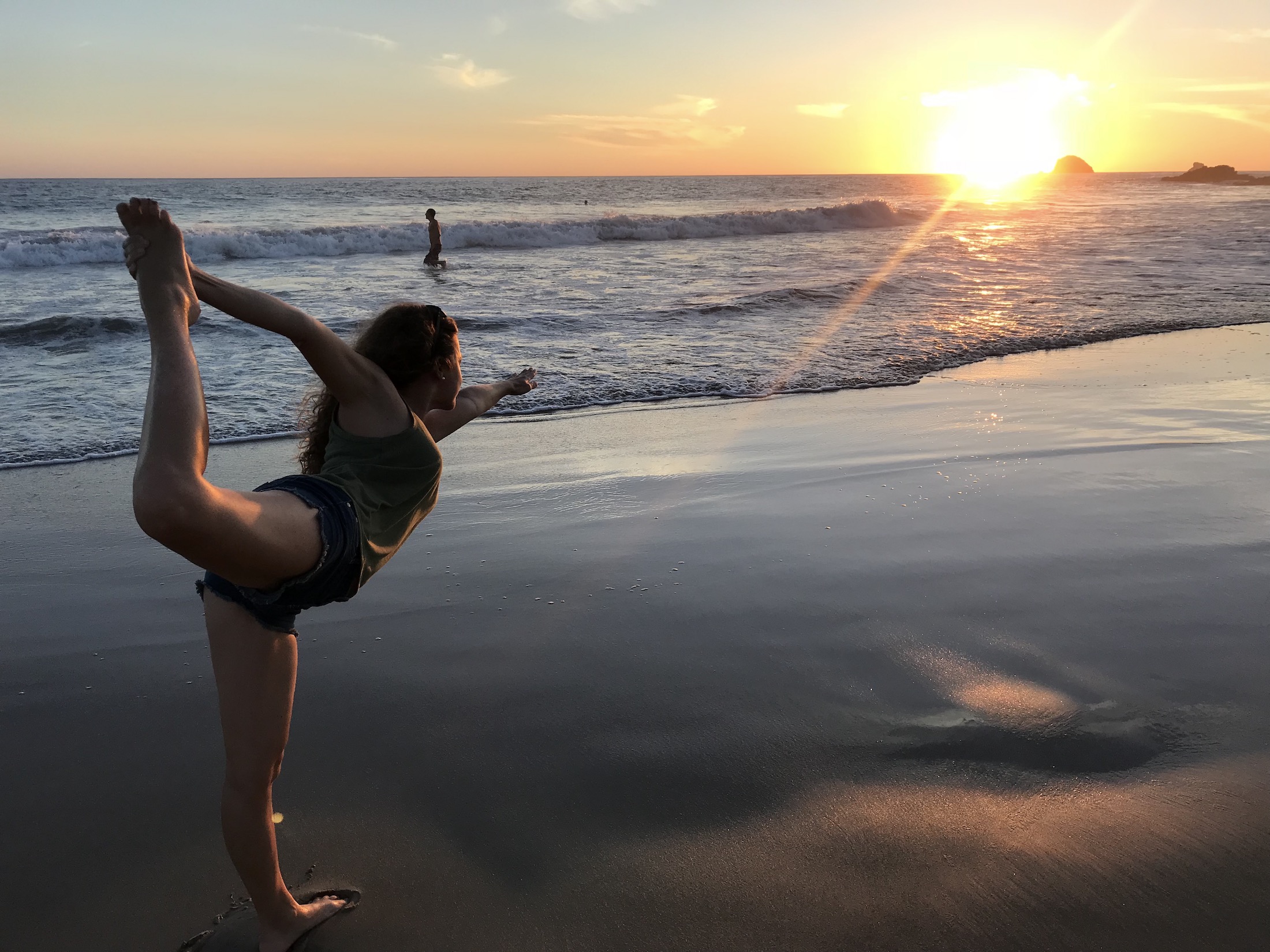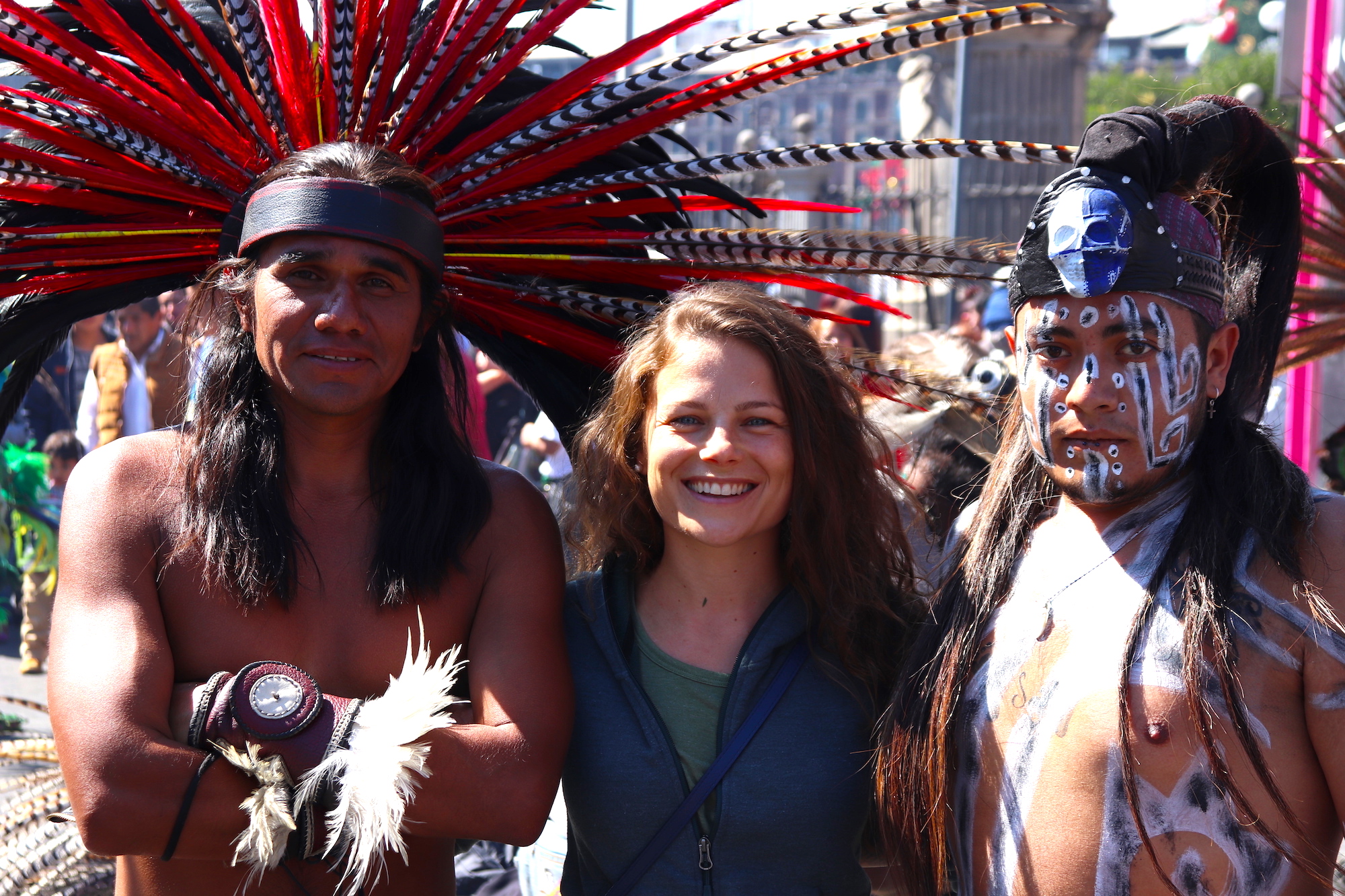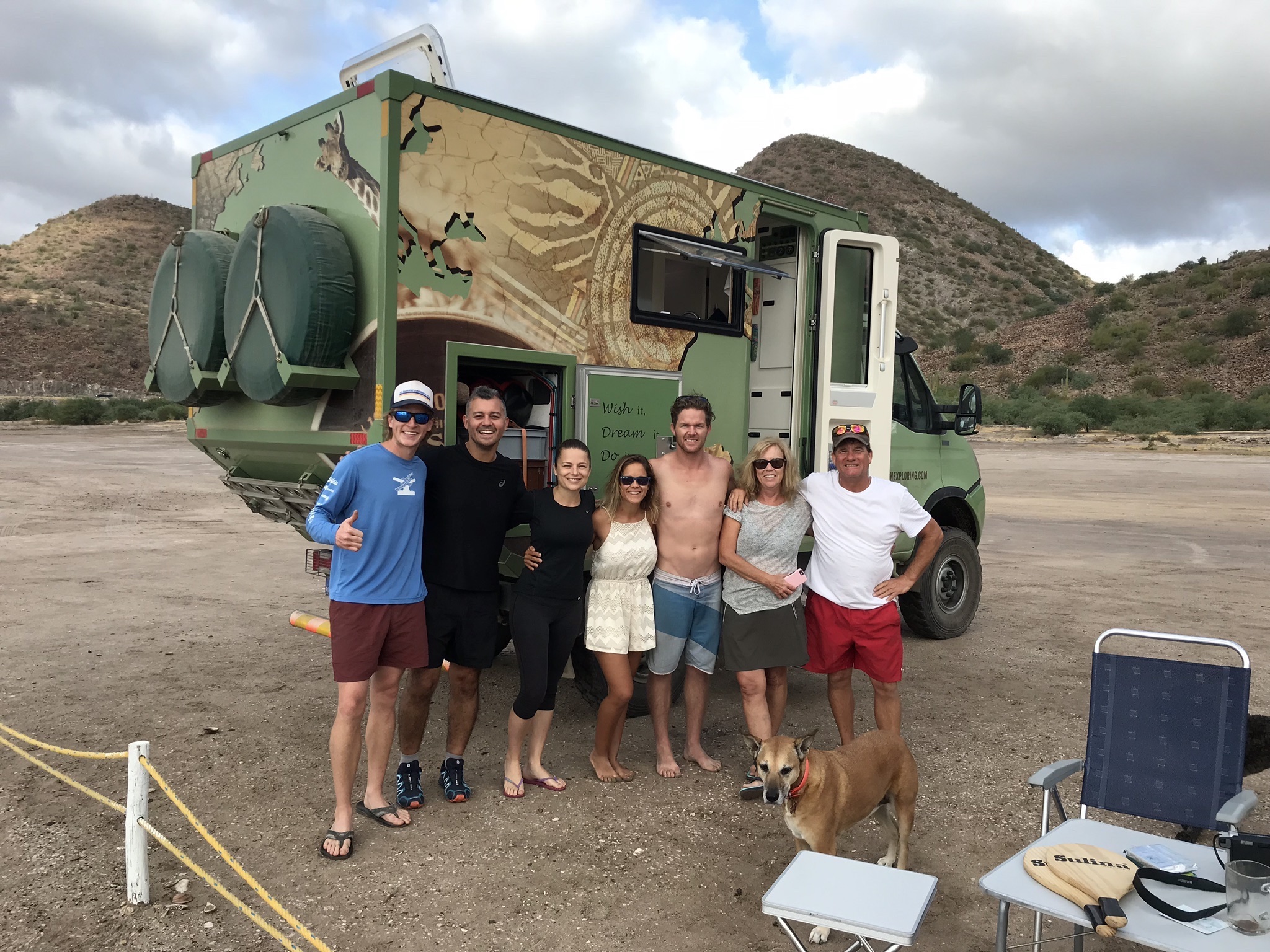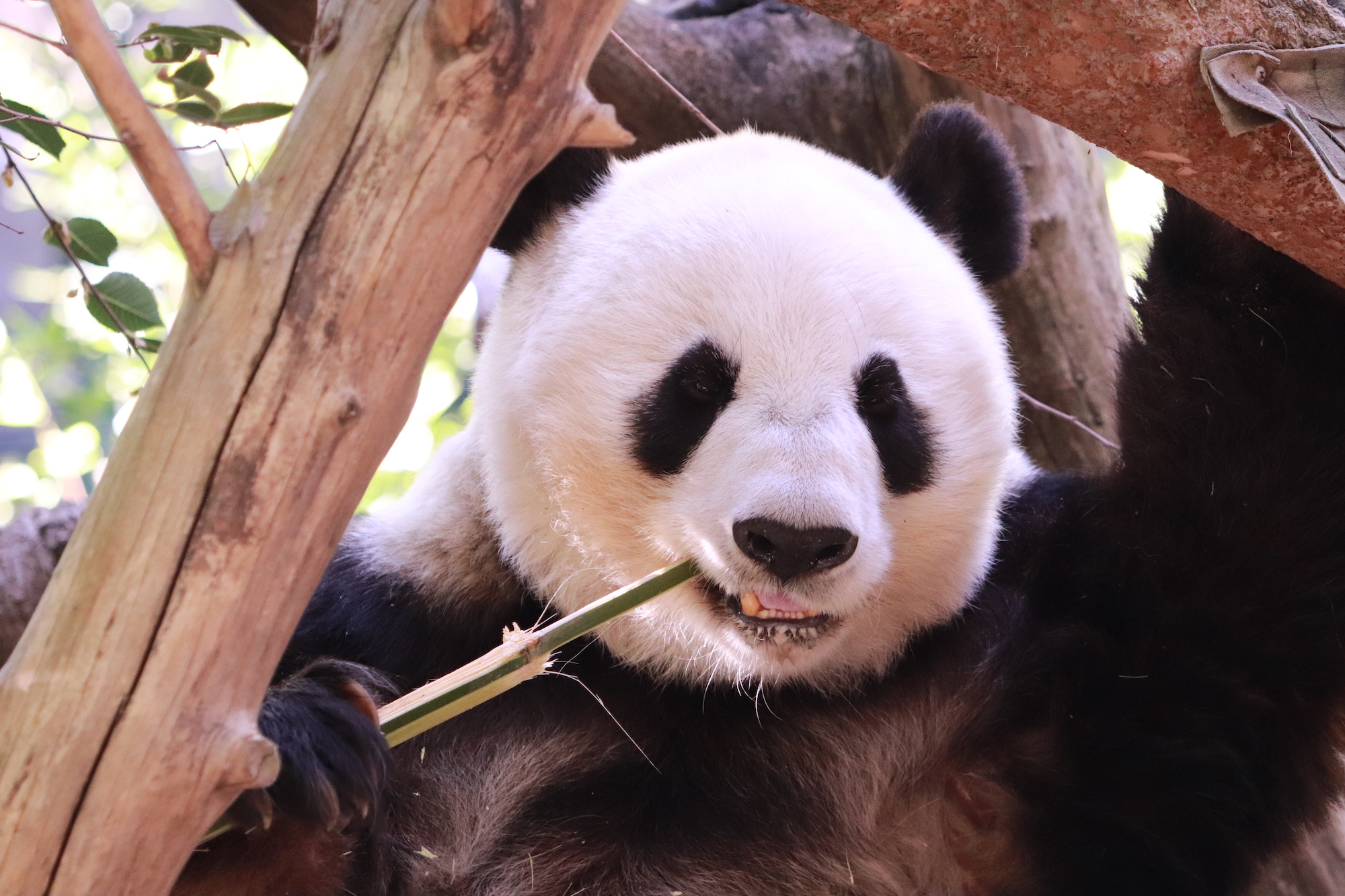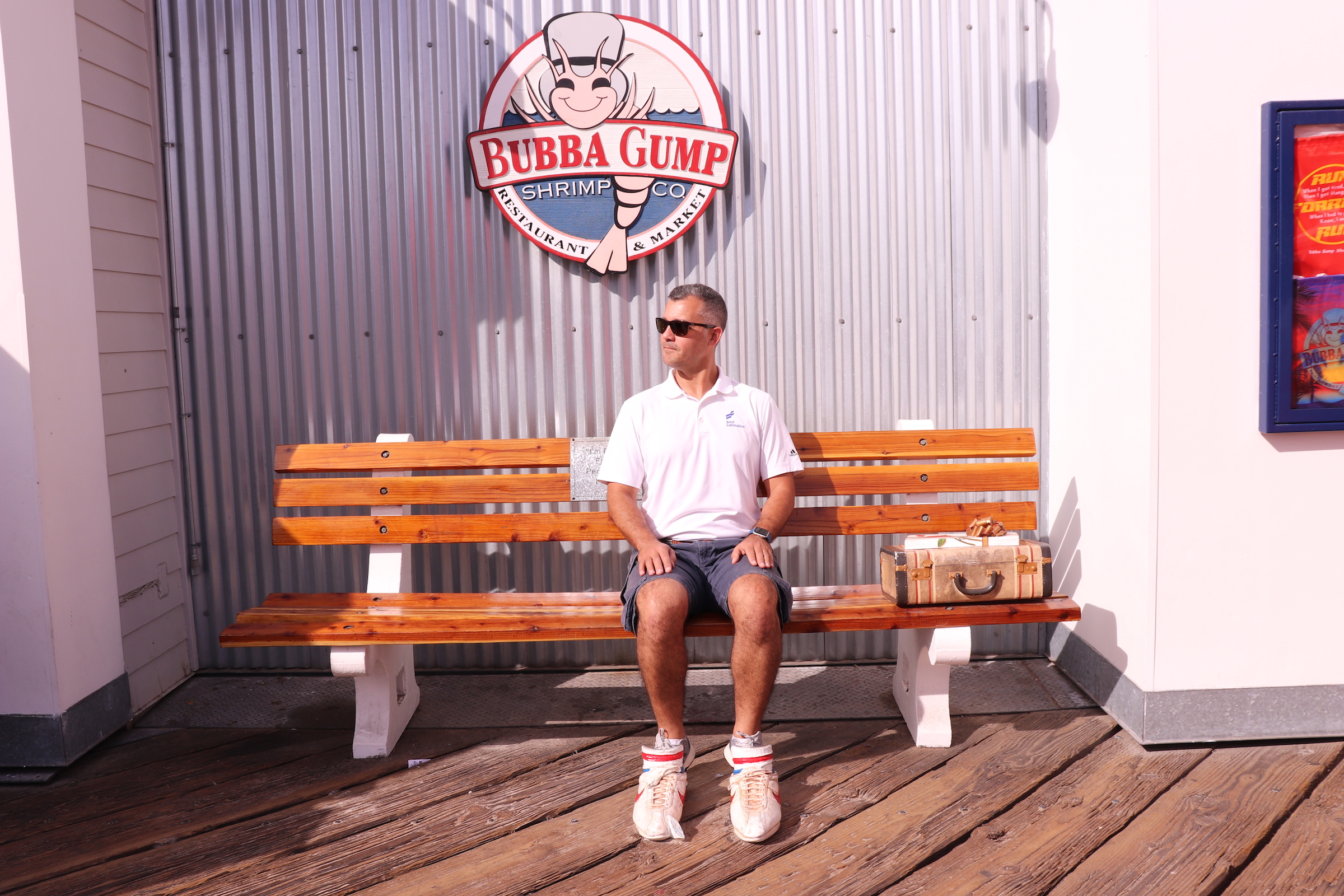Yukon province was by far one of our favorite experiences of our expedition. The wilderness, the vastness of nature, remoteness, silence, the charm of Dawson City and its Gold Rush era, the friendliness of the locals culminating with the Top of the World Highway scenic route were events that remained close to our hearts. From kayaking, camping, hiking to watching wildlife and the season’s changing colors Yukon is territory with an incredibly untapped potential, a place where you feel closer to mother nature, you feel simply the man into the wild and this was what we were looking for. It was our opportunity for desolation, reflection and closeness to nature.
We visited Yukon in two seasons, the first time during the summertime on our way to Alaska and the second returning from Alaska in the fall.
In this section we will share with you the experiences and adventures on the route to the Top of the World Highway.
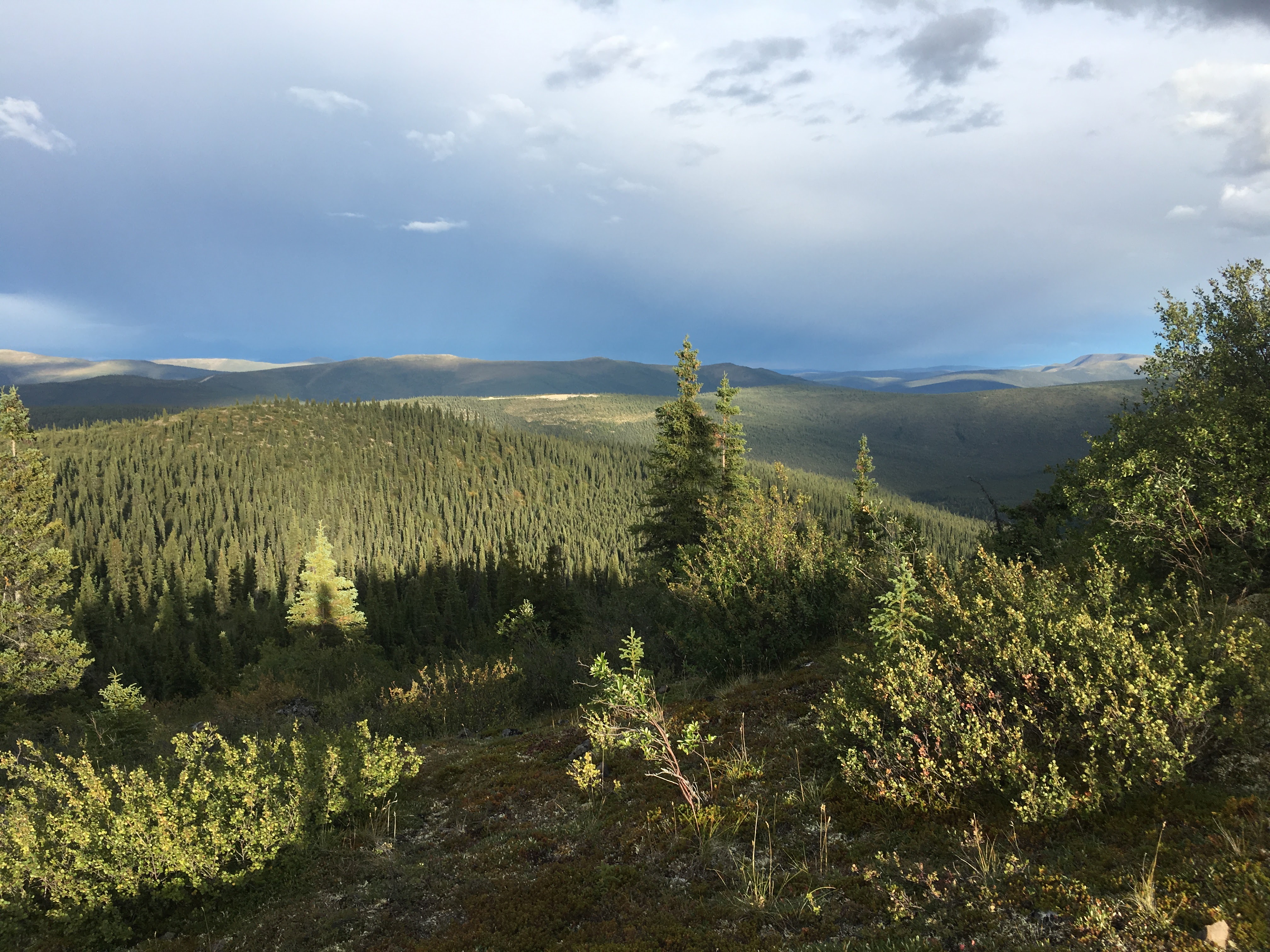
Watson Lake
We arrived in Watson Lake in August, the first town in Yukon towards the Top pf the World Highway. Here we learnt about the history of the region including the story of the world’s famous Alaska Highway and took the popular pictures at Signal Forest.
Alaska Highway stretches 2450km from Dawson Creek, northeastern British Colombia to far inside Alaska, at Delta Junction. It was built in the WWII immediately after the Japanese attack of the American navy base in Pearl Harbor. It was then recognized that US needed to be able to access Alaska over land, in the event of further confrontation with Japan.
The road was opened in a record time, just below an year since construction started and it was perfected over the years until the current state, which looks very good.
What also stands out in Watson Lake is the popular Signal Post Forrest. All the travelers that are over-landing Alaska Highway can leave a mark in Watson Lake at the famous Signal Post Forest. There are various forms to signal your passage over here: the most general ones are plate numbers or a plaque that showcases your origin, name and maybe a funny message.
It’s quite impressive to see how many visitors from all the corners of the world are taking this journey.
Camping and Kayaking
We departed quite late from Watson Lake, but we continued three more hours until we were half way to Whitehorse. We found a camping spot by the lake to stay over night.
It was the first time we were not alone, there were other travelers that stopped here, including a couple from Holland that was traveling around the world for the past 18 months, an Austrian couple passionate for rock climbing that were traveling for the past 3 years and also Canadians that were either spending the weekend there or they were going home to Ontario back from their trip to Alaska.
It was really nice to meet such a diversity of people and listening to their stories.
We decided to stay for the weekend. It was a wonderful morning with the sun shining on the lake, a pleasant and peaceful atmosphere surrounding the area. After we had our breakfast down the beach, we started to engage into communication with our neighbors.
It has been a while since we didn’t talk with other people, so it was a good chance to exchange some ideas and hear locals’ stories.
There was a Canadian group from Whitehorse that were kind enough to teach me how to kayak. Because there are so many lakes here, kayaking and canoeing are very popular outdoor activities in Canada. I was curious to experience this ever since we arrived and this was my chance. Our neighbors had about five professional kayaks which I understood they use for camping too.
They explained me they often camp in the kayaks for days passing through the fjords, inlets and bays of the Pacific Ocean. There is enough space in the kayak to store a tent, food, clothes and minimal things you may need for camping. It must be amazing to kayak with a group of people and camp on the wild on the river sides, lakes and bays.
The most experienced lady explained me that during her kayak expeditions into the ocean she met orcas, humpback whales, sea lions and seals. I was imaging how frightening must be to meet the huge marine mammals coming towards your tiny kayak or having the feeling that something big may come underneath your boat popping you out in the air.
Despite all these dangers, Barbara explained that she was not scared nor worried. She said it all came natural and the whales are very respectful to men. You just need to knock into your kayak to signal your presence there and they don’t come over you. She explained that the most threatening marine mammals were the sea lions that once kept looking and surrounding her boat. She splashed couple of times the water with the paddle and they understood they need to leave. Maybe one day I will have the courage to do this fascinating trip, kayaking with the whales 🙂 How much closer to marine life can you get than this? Must be magic.
They thought me how to gear up, what to do and how to do. In few minutes I was on my own on the lake in such a small floating unit, just 10cm between me and the lake. The line between you and the water is thin, you can get easily scared that you might fall, but on the contrary, once I was in it, I felt so comfortable and close to nature. It was wonderful to feel a thin line between you and the water.
We kayaked in a group so that made the experience even more fun, we had great chats while we were discovering the area, the river islands and beavers’ nests. That was an expedition I will never forget and now I am confident I want to buy a kayak for the rest of our journey.
The day ended with a big fire place that our other Canadian neighbors from Ontario organized it down the road.
This weekend was one of our nicest camping experience. We had a great spot by the lake, privacy, good neighbors, good company, learnt how to kayak, spent time by the fire pit, listened the night birds, made new friends and met different types of travelers from locals spending their weekend camping to globetrotters that are for years on the road. The exposure to such a diversity of lifestyles and cultures was priceless.
On our way to Whitehorse we stopped at Carcross Desert, considered as well the smallest desert in the world. It’s quite unique to see yellow sand coming from the mountain while around you face pine trees vegetation. This natural wonder is the exposed sandy bed of a former glacier lake. This is another sign that the glaciers are melting one by one, year after year, a clear sign of global warming.
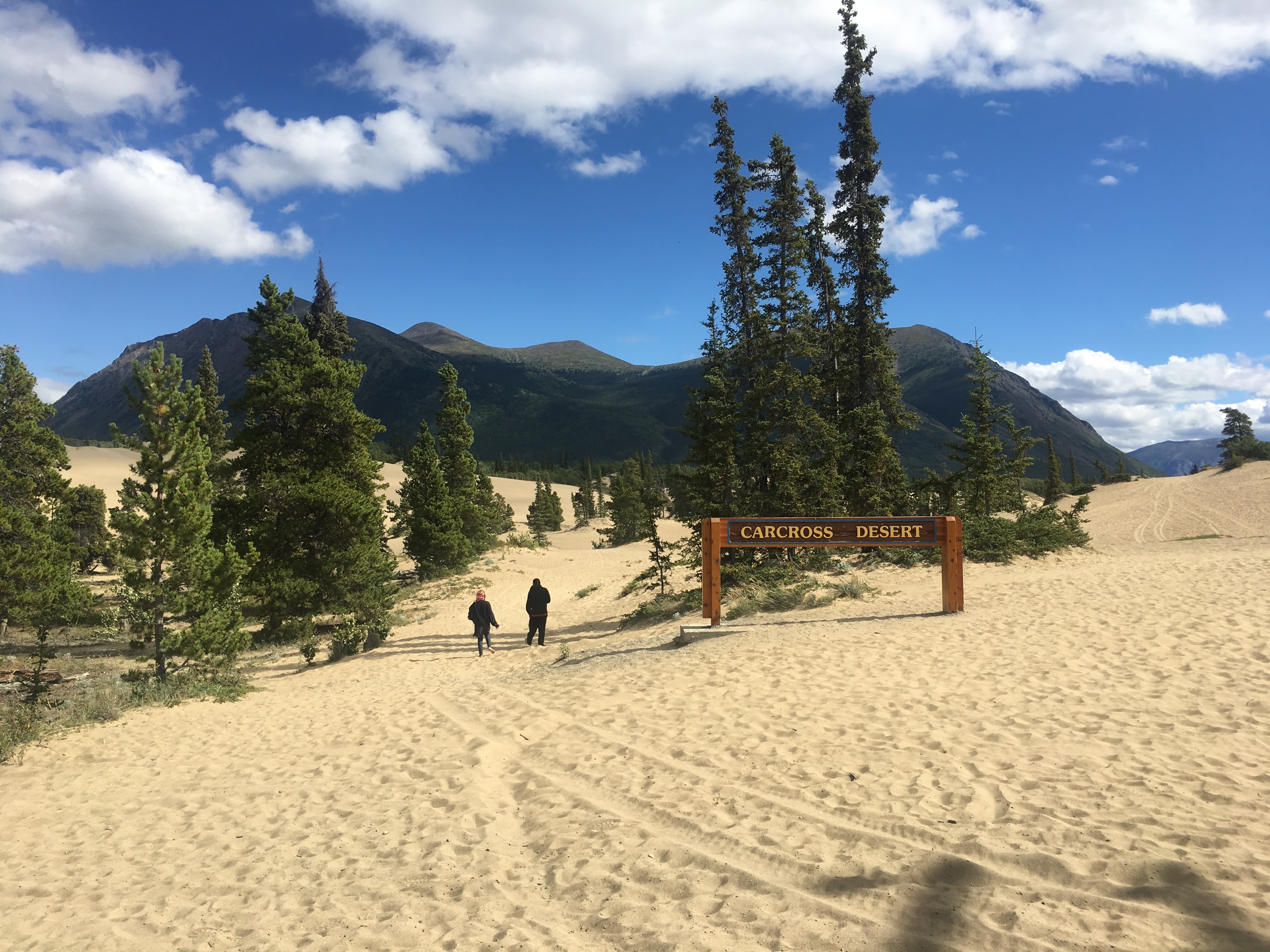
Whitehorse
The weather changed from one day to another.It suddenly became cold and the lovely summer became autumn over night. We are wearing jackets, thick trousers and the air got fresher and cutting that morning.
We arrived in Whitehorse, the capital of Yukon province. The city has a population of about 25,000 inhabitants, while 35,000 are in total in the whole province of Yukon. It’s impressive to see such a small population in a territory of approximatively 482,400 square kilometers.
The atmosphere and the looks of the city was one of a small western town, with houses spread around one main street and couple of parallel ones, while most of them seemed to be hidden in the forest. It was quiet and calm. Yukon River is passing through the middle of the town and this brings a special energy to Whitehorse.
Since the weather was not too inviting for outdoor activities, we decided to treat ourselves that afternoon and go to the most authentic restaurant in town, Klondike Rib & Salmon BBQ.
We wanted to experience the food of the locals and to taste a bit from their culinary culture.
We had obviously pork ribs, salmon bbq, halibut with mashed potatoes, grilled mushrooms and vegetables, paired with blond local draft beer. We wanted to try something authentic and that was as authentic as it could get in Yukon. The food was really fresh and I would rate it as good. The portions were generous and proper for cold weather and hungry people. The restaurant dates from the beginning of the 20th century and hosted one of the first explorers and adventurers on their way to Dawson City during the times of the Gold Rush.
The interior design created a cosy atmosphere. The experience took as for a moment 100 years back in time when people arrived first here to trade bison skins, work for the railway construction or were rushing in the search for gold towards Dawson City.
We had a great time at the Klondike restaurant. It felt good to have a local experience.
After our bellies were full we went for a walk and explored a bit the town. It’s a small one, but it has everything that you may need and you won’t need. Considering that here you have Walmart, Canadian Tires and most of the Canadian big brands we were wondering if the demand of the city that has a population less than 30,000 people is big enough for these mega stores. We found some nice hunting and fishing shops as well. Actually the first time I entered a shop that would sell guns. That was strange to see, but I guess is normal here. Any local must have a gun here to defend itself from the bear, wolfs or any other wildlife threatening their territory, crops or domestic animals.
We finished the grocery shopping and returned to our camp, the parking lot of Walmart to rest for the evening.
The next day we were on our way to Dawson City.
Since we started to cross the forests of Alberta, British Colombia and Yukon we saw one phenomenon we were quite intrigued to understand why it’s happening. We’ve seen hundreds of hectares of forest burnt to ashes. It was one of the saddest things to experience on the road. It felt you are crossing a natural grave yard. Tons of vegetation eradicated from the earth.
We started to ask people around why is this happening, what causes such devastations and what are the affects. We understood that generally they happen from lightening or during summertime simply from fire pits or forgotten light-up cigarettes. When they start to burn, the fire escalates in such a short time that there is no time nor human power to react and influence in any sense the course of the fire. It’s unstoppable and the firemen often try only to estimate how far can the fire reach so it doesn’t get to villages or little towns. In order for such calamity to stop, they have to cut raws of forest ahead of time. When these events occur the roads are blocked and you can’t cross the region. I can only wonder where will all the animals from these forests run and if they have time to find shelter considering the fastness with which the fire spreads.
That’s pretty sad to see, but in the local’s opinion this is natural. The forests change every 100-150 years and this is part of the nature cycle.
Dawson City
After another 500km we reached the historic Dawson City for its Klondike Gold Rush. It is the last settlement before you get on the Top of the World Highway and cross to Alaska, USA.
There are almost 1500 people living now in Dawson City. We thought there would be just some houses with a small community spread around Yukon river and a forgotten out of function gold mine.
Well, we were wrong and nicely surprised. The small town, once a center for gold mining and an attraction for fortune seekers, maintains alive the spirit of the gold rush through its beautiful XIX historic buildings, architecture and a very well organized information center that offers tourists free city tours which take you through the most iconic buildings of town and the most fascinating stories happening during the gold rush.
The unpaved parallel streets easy reachable on foot give you the feeling of a wild wild west, while the cabaret shows remind you how entertainment was back in those days.
The guide that showed us the city was dressed like a respected well-off lady of the XIXth century of Dawson City. She walked us through the most representative buildings in town engaging us in the stories and legends of the people that used to live here during the gold rush in the search for a better life.
Her act was perfect. She showed us the places where most of the action would happen in town, the bank where the miners were exchanging gold for money, the post office where they would pick-up the long awaited news from afar families, the restaurants where the wealthy people would spend their gold money and the women that would auction their company in exchange for the best bids.Stories about the prostitutes that would keep Dawson City a safe place to normal people that would let themselves fooled by scammers with promises of fake shares in fake companies was the day to day life during the Gold Rush.
The desperation and hunger of some people would go in parallel with the richness of some others. Dawson City seemed the town of all opportunities and of all fouls in search for fortune.
During that time about 100,000 people from US, Canada, UK even New Zealand came to Dawson City hearing about the gold. Some people would travel for an entire year to get this far by sea, land and rivers. The last part of the road to Dawson City could be reached only through the Yukon river. There was no other infrastructure built. For example people could only reach Dawson from Whitehorse, which is more than 500km distance away, by Yukon river or they could reach it through the other side from Alaska sailing Yukon River.
The river would freeze in the winter time and transportation would be possible only before or after winter, about 6 months of the year. This would not only make difficult reaching the city, but also would keep the place isolated during winter time, often with no access to goods and food supplies.
This is not a rare thing even nowadays in a lot of north towns of Canada and Alaska where you can reach towns or villages only by airplanes.
People lost their money, their health and lives allured by the gold they would find in the Klondike river. In order to get to Dawson City you needed to cross harsh winters, hike steep mountains, build boats to navigate the Yukon river in temperatures often up to minus 50 degree Celsius.
Few people actually enriched themselves in Dawson City following the gold rush. Most of them were struggling to survive and a lot of them even died of famine. All the promises of gold and riches were hardly a reality, rather a tragedy, while a lot of people lost their lives in avalanches, died of famine, diseases or being killed for money.
People were desperate and would do anything to survive, thus cheaters and prostitution were part of the town’s affairs.
We were fascinated by the stories of the people living in those times and in those conditions. Walking through the streets and visiting the buildings where these events happened, took us 100 years back in time into the wild, cold and mysterious north west.
We were transferred into a different world, a time capsule.
During this fascinating tour we met an Australian couple that we’ve seen in Watson Lake and Whitehorse too. Since we met so often on the road we started to be friends. We continued the tour walking freely by Yukon River, eating ice cream and taking pictures.
At 7pm we went for dinner and than for the famous cabaret show, the show to go in Dawson City.
We had dinner in a greek restaurant and we ate a tasty chicken gyro with greek salad and tsathiki with pita bread. We drank wine and bear and had a great time in the company of Lyn and Kurt.
At 8:30pm we decided to go and see the cabaret show. We thought it might be something kitsch and touristy, but it was really an authentic cabaret show from the 1890s with live music and spectacular ballerinas.
We had great fun and enjoyed the show from the balcony of the salon with Lyn and Kurt.
The Australian couple are traveling for the past 3 years and they don’t have any plans to stop any time soon.They motorbiked around the world and now they switched overlanding with a custom built truck by Kurt. They are in their 60s, but very young in spirit and heart.We loved their company and we got a lot of insights and advise for the road.
We had couple of more drinks, laughed, talked and admired the show which was very well staged and a good performance. A lovely night in the company of those wonderful people you met accidentally on the road.
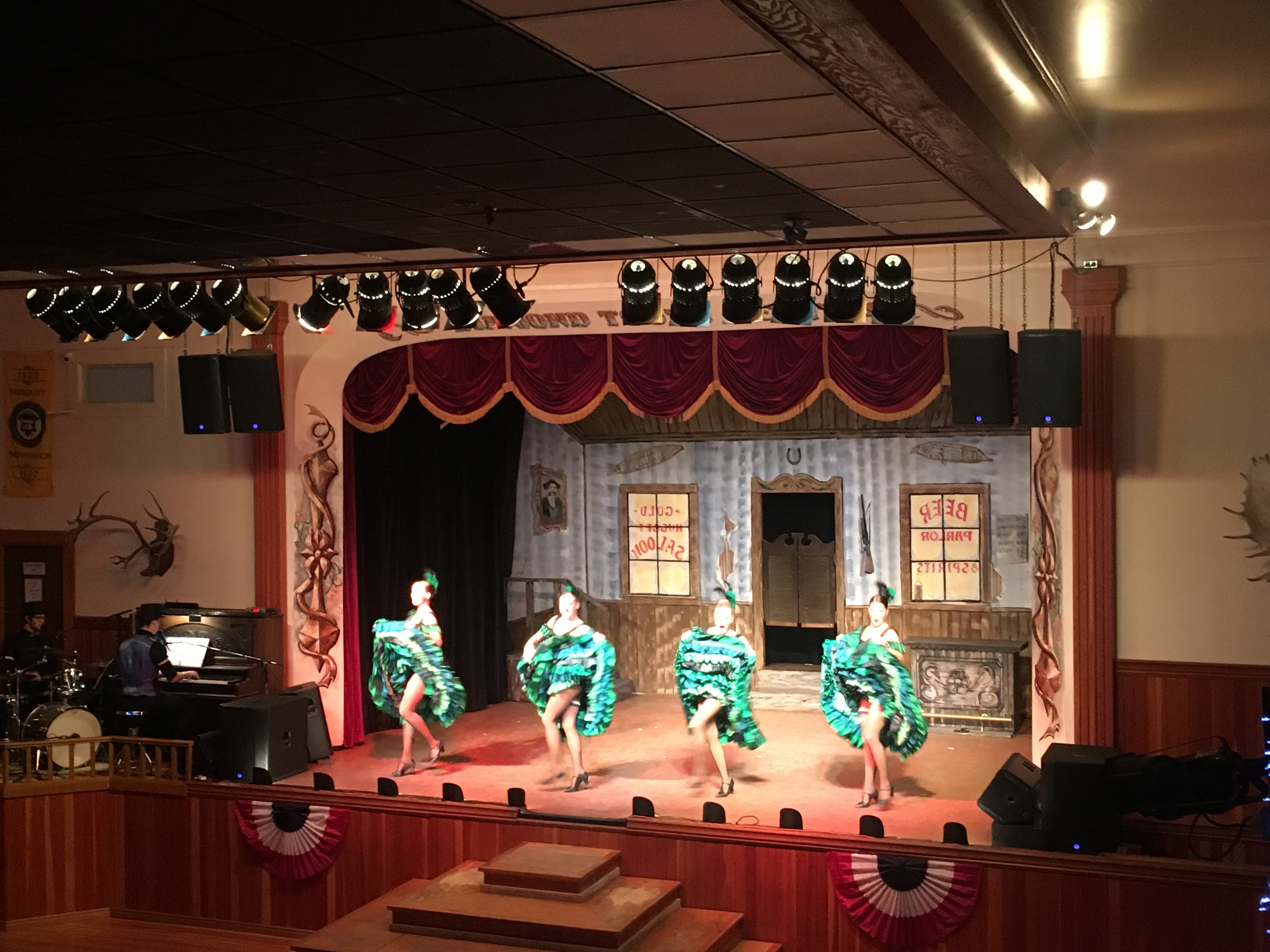
The next morning we took a small trip on a steep road that would take us on top of a hill above Dawson City. That was one of the most beautiful scenes we’ve seen.
From the top, Dawson City looks awesome. You can easily observe the creeks formed by the mining sites into the river and the mountains on the sides being washed by water and time. It was just fascinating to watch.
We had our coffee and breakfast assisting to one of the most mystic sceneries we’ve seen on the road.
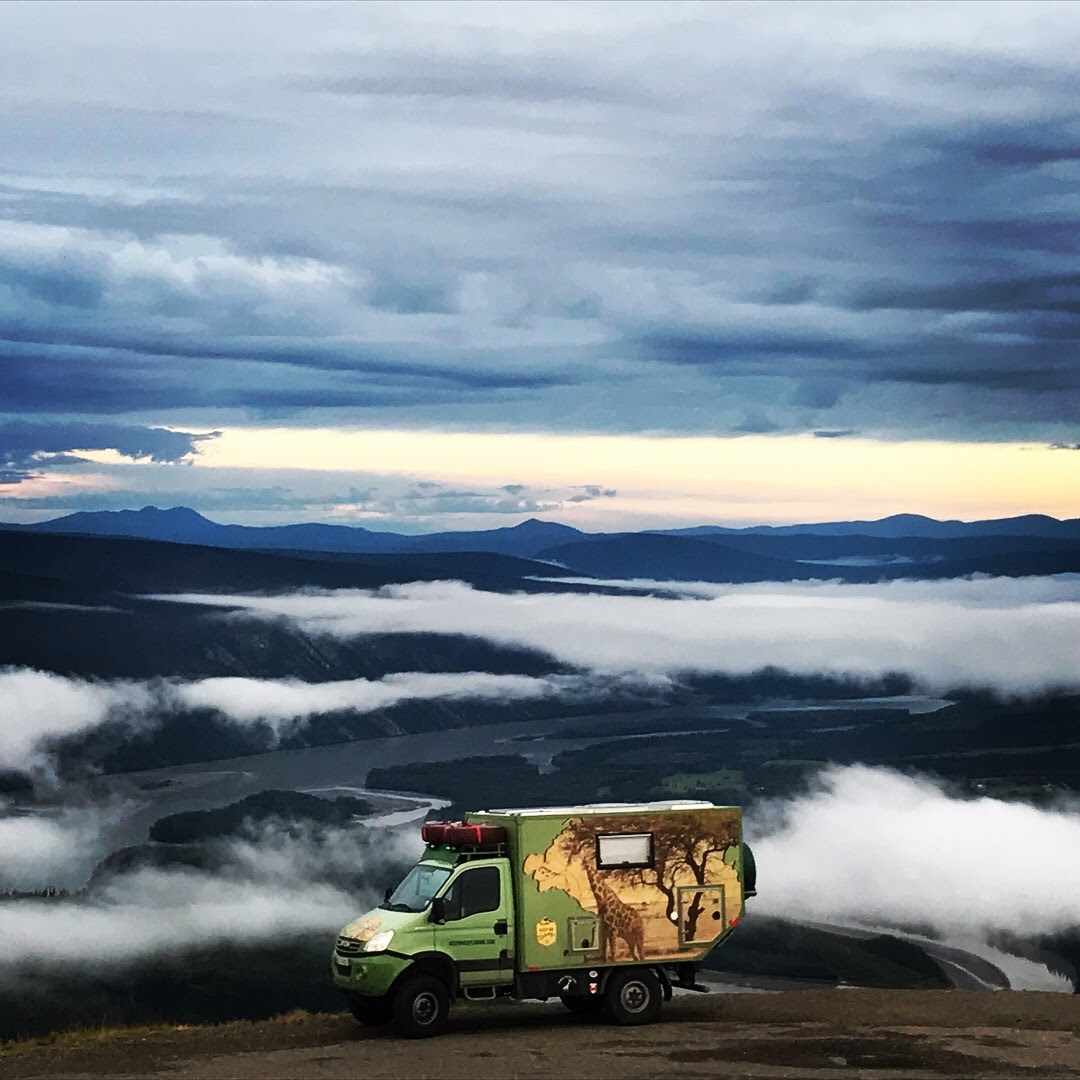
Top of the World Highway
The adventure needed to continue to the much desired “Top of the World Highway”, JP’s ultimate dream.
We got a local ferry to cross Yukon River from Dawson City and the journey was on. Marvelous!
One of the most spectacular mountain sceneries, pine, spruce forests, alpine landscape and vastness of nature we’ve seen. We understood why this highway is called “ Top of the World” because it is on top of the mountains, on top of the highest peaks, on top of everything. It’s just a superb scenery.
Before getting to the end of it, our Canadian friends from Yukon, Jon and Barbara sold us the local secrets and advised as to visit the Forty Miles Post. This ride was about 30km off-road . We went through the forests on a quite adventurous off the main road trip, not easily reached if you don’t have a 4x4. We didn’t know what to expect. We just heart it’s beautiful and we were determined to continue driving and see the beauty.
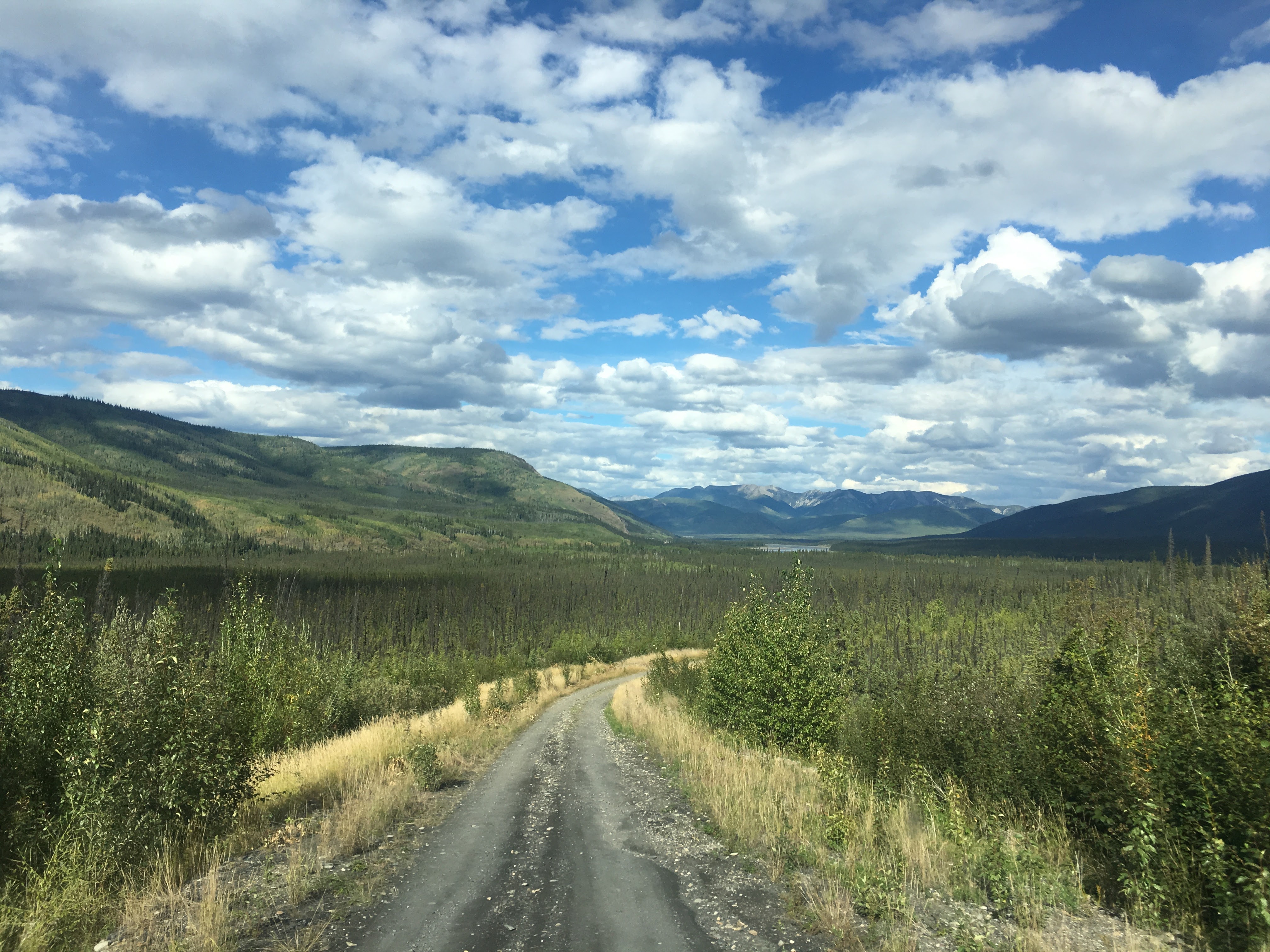
After about 40 minutes drive we arrived. The road took us back down to Yukon River from the top of the mountains and alpine views.
We were in a spot that once was a settlement of about 700 Indians living on the banks of the river. It was not just any other spot. It was the place where the river would meet the biggest herds of caribous, where the Indians would come into action and hunt the much desired meat and fur, where the local trade between the tribes would take place and later on where the French and British traders would arrive to exchange goods. Besides hunting, the river would provide wild salmon and various fish that made the community of Indians flourish.
Today 40 Miles Post was inaugurated for public access. The government created a better trail through the forrest. It’s about 2km from where the road finishes on foot. They made even a cottage that I found the perfect place for retreat in the wilderness and live for a while connected to nature. I wish we could stay there for few more days. We were not prepared to meet such a place. We were blown away.
When we got to the post we met a dad with his three children wondering through the forest and having absolutely no fear of any wild animal. He had a boy of 7 and two girls of 5, respectively 2.
They were all playing there in the middle of the forest fearless, free and natural. It almost look as it was their natural habitat, not the bears'.
Since they were the only people at the post we asked the father what was he doing there and we wanted to know more about his life story. JP got really fascinated to understand that they are a German family that decided to move the other side of Yukon River in Dawson City to leave a life closer to nature. They gave up their jobs and careers in Germany, he is rising the kids and does a bit of homeschooling when the children can’t go to school because of the cold or snowy weather, he builds his own house by himself while the mother is working in a hard wear store in town. By profession he is forester, while she is an engineer. They decided to make it simple and downsize from their busy lives in Germany, came to Yukon into the wild and to grow their children here.
We understood they do everything in house from cooking their own bread to growing their own vegetables. Alex explained he hasn’t been in town for two months and hasn’t eaten an ice cream for almost an year. And this doesn’t bother him. He is fine, he is happy and he doesn’t even think about these things.
There will be soon an year since they are living near Dawson City and he seems in peace, calm and in control of his destiny.
We were impressed. I really liked the kids. They looked so playful and happy. An image of a fairy tail I will never forget.
I wished we would stay there couple of more days.
We decided to move on and get more mileage as we were supposed to cross the border with US towards Alaska the next day.
We assisted to a spectacular sunset on top of the world and watched the beautiful silence of nature. We found a spot to overnight on top of the mountains, very close to the road. We had a 360 degree view to the alpine landscape. We were in the bush and we liked it.
